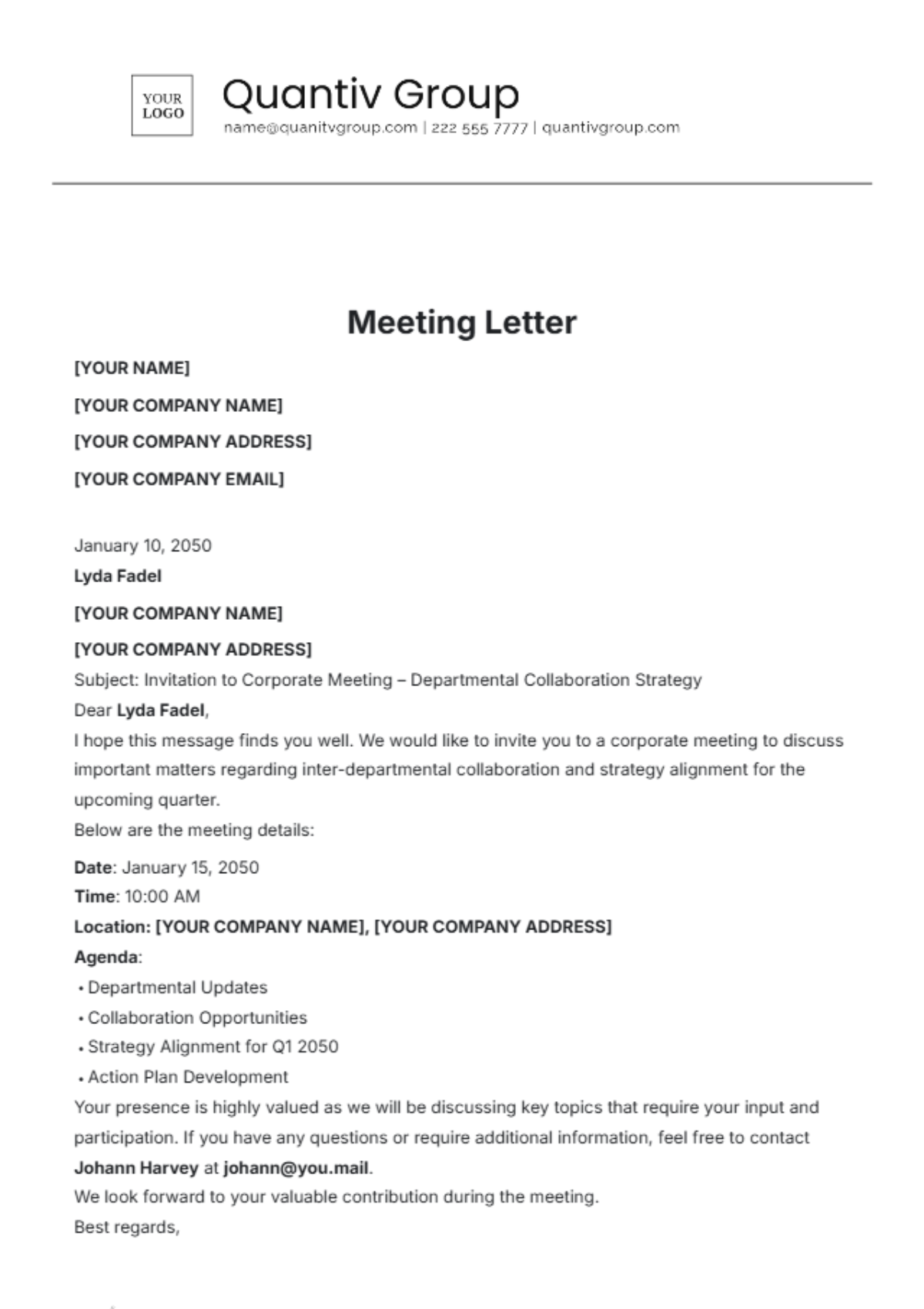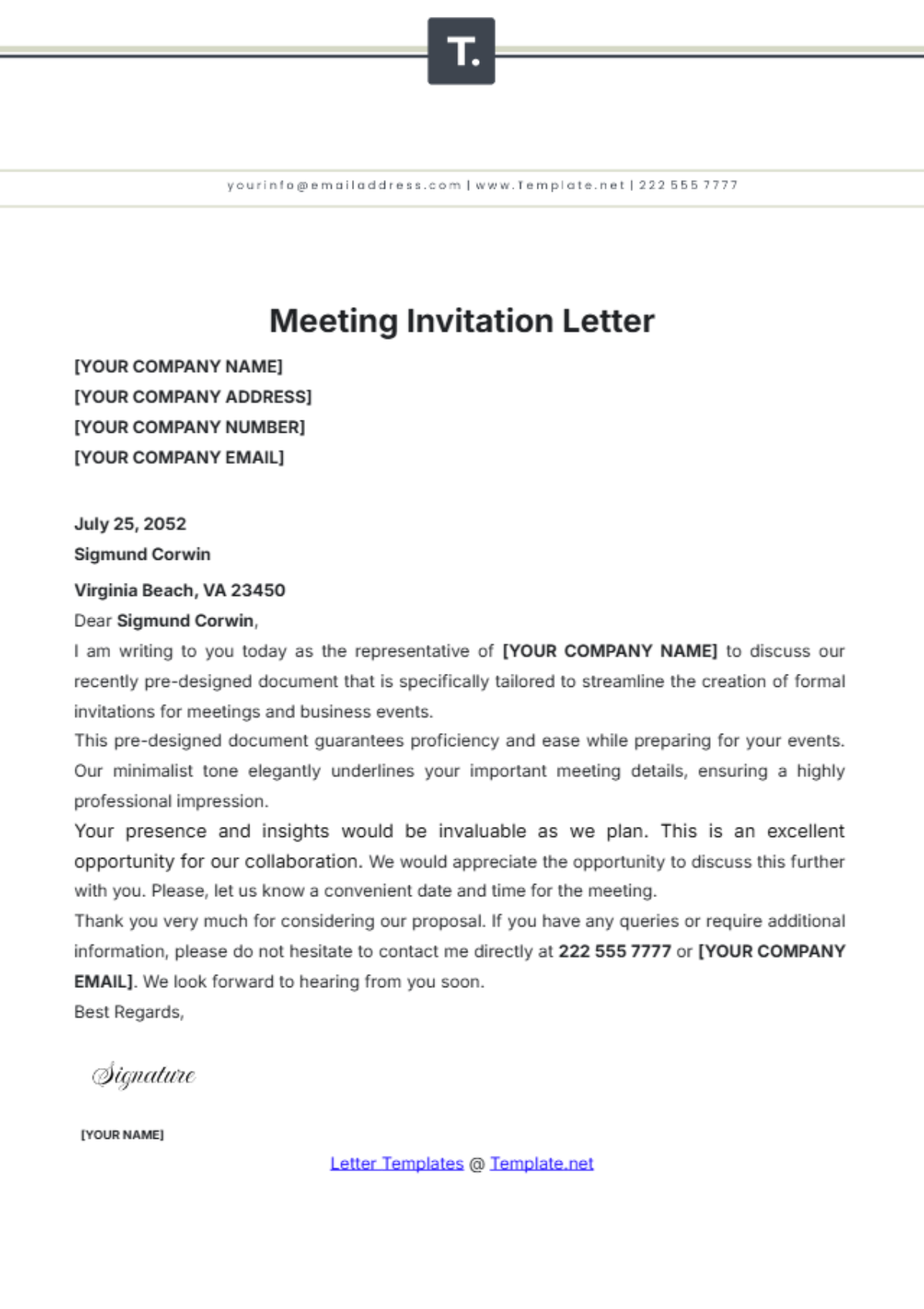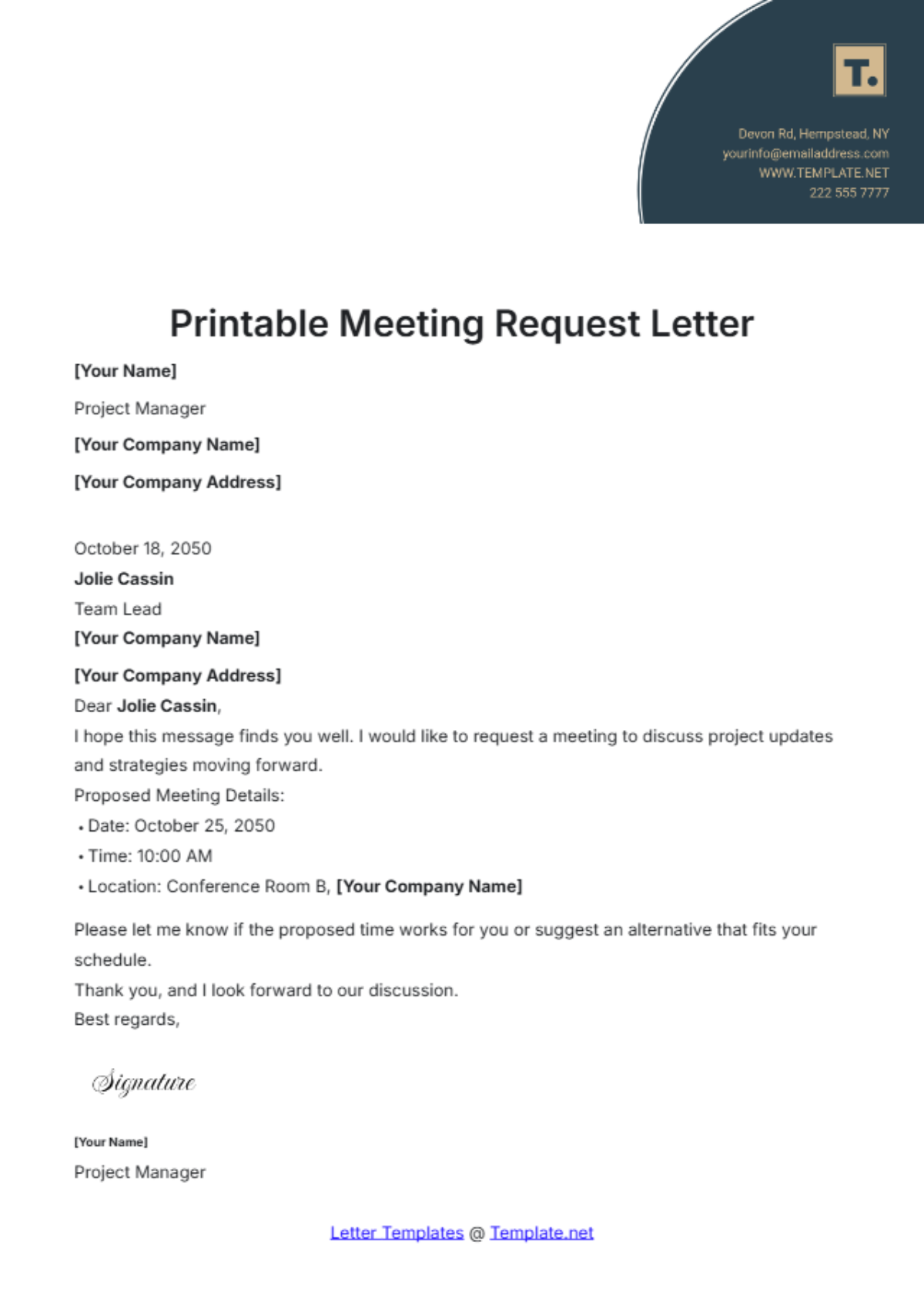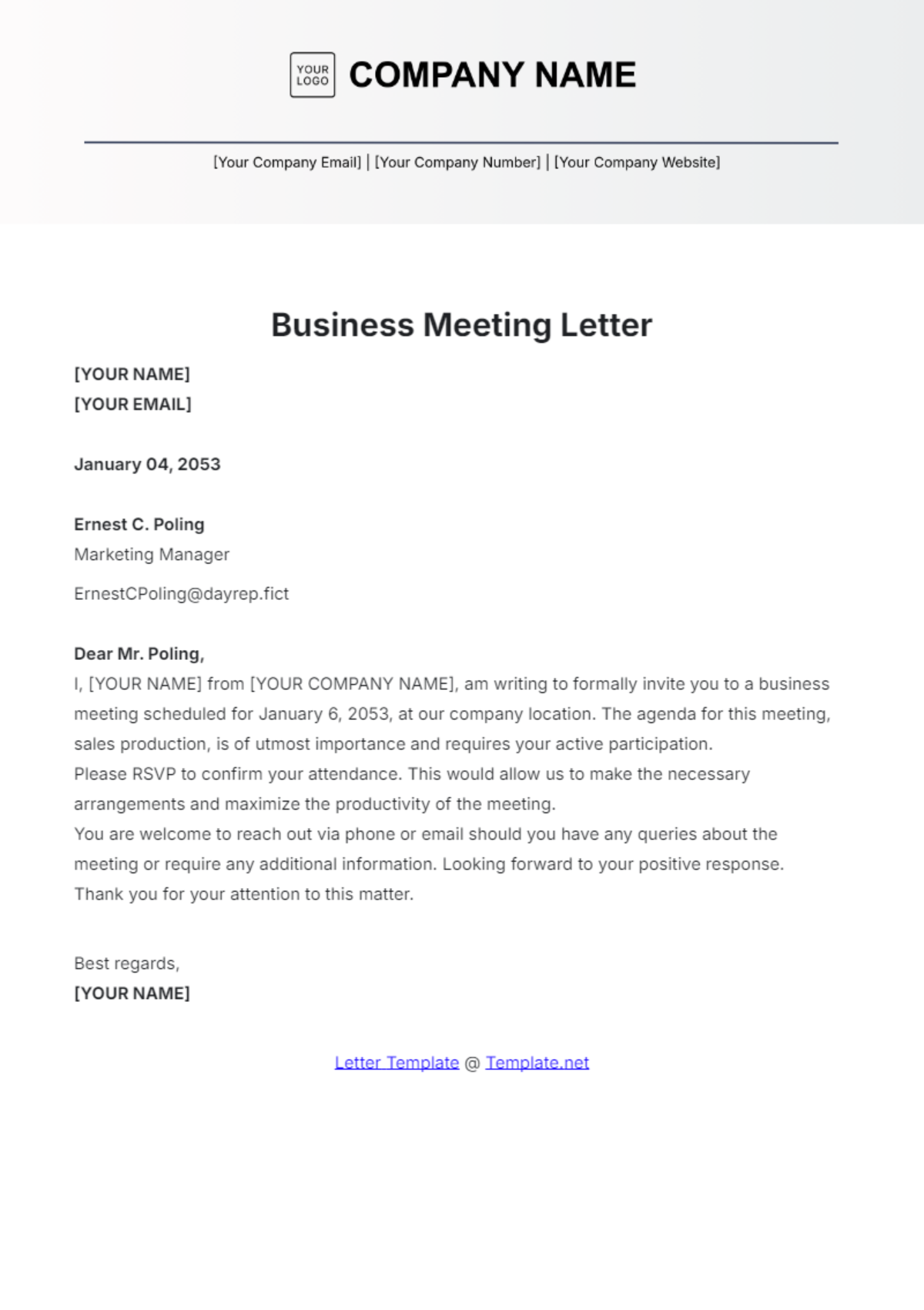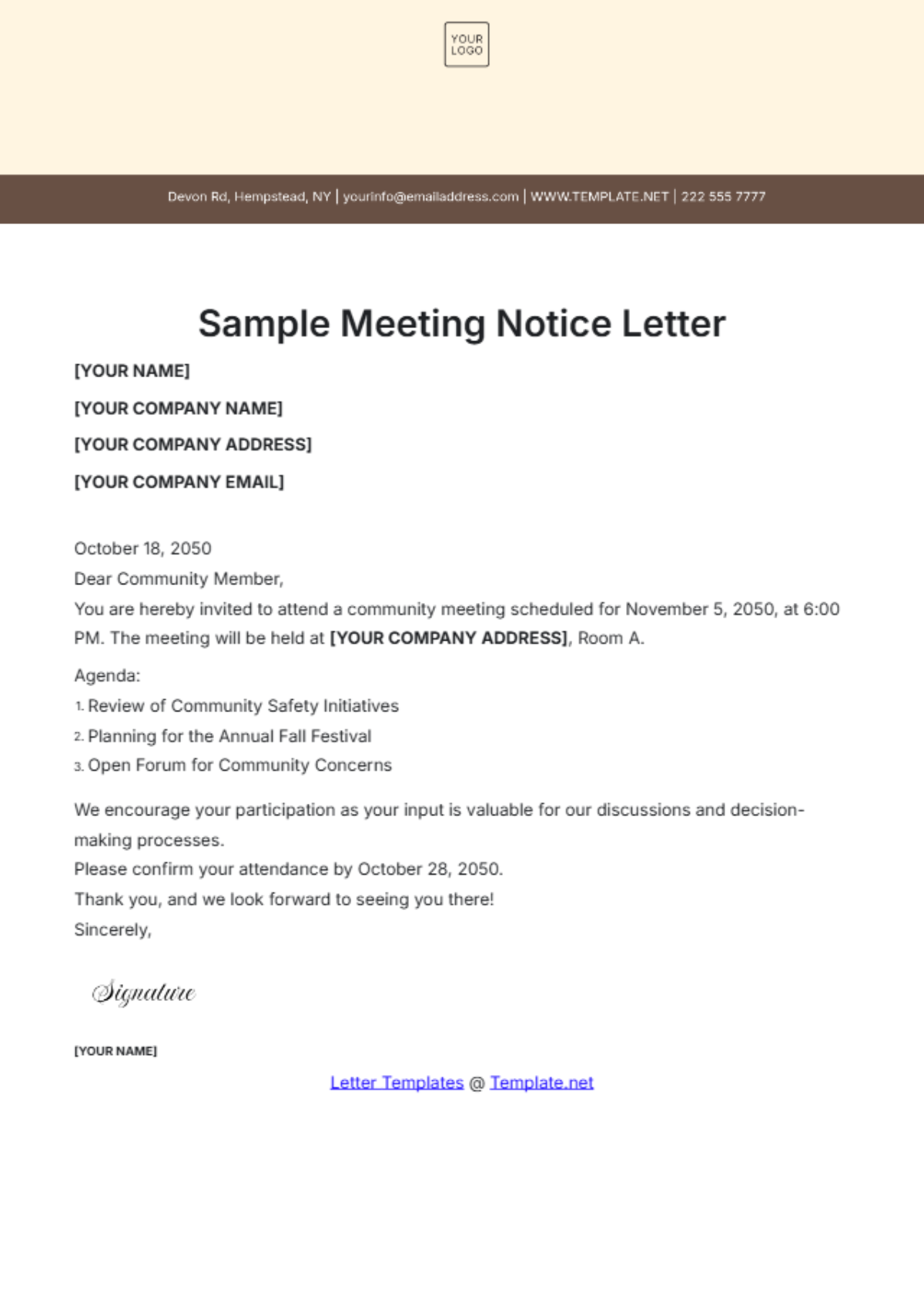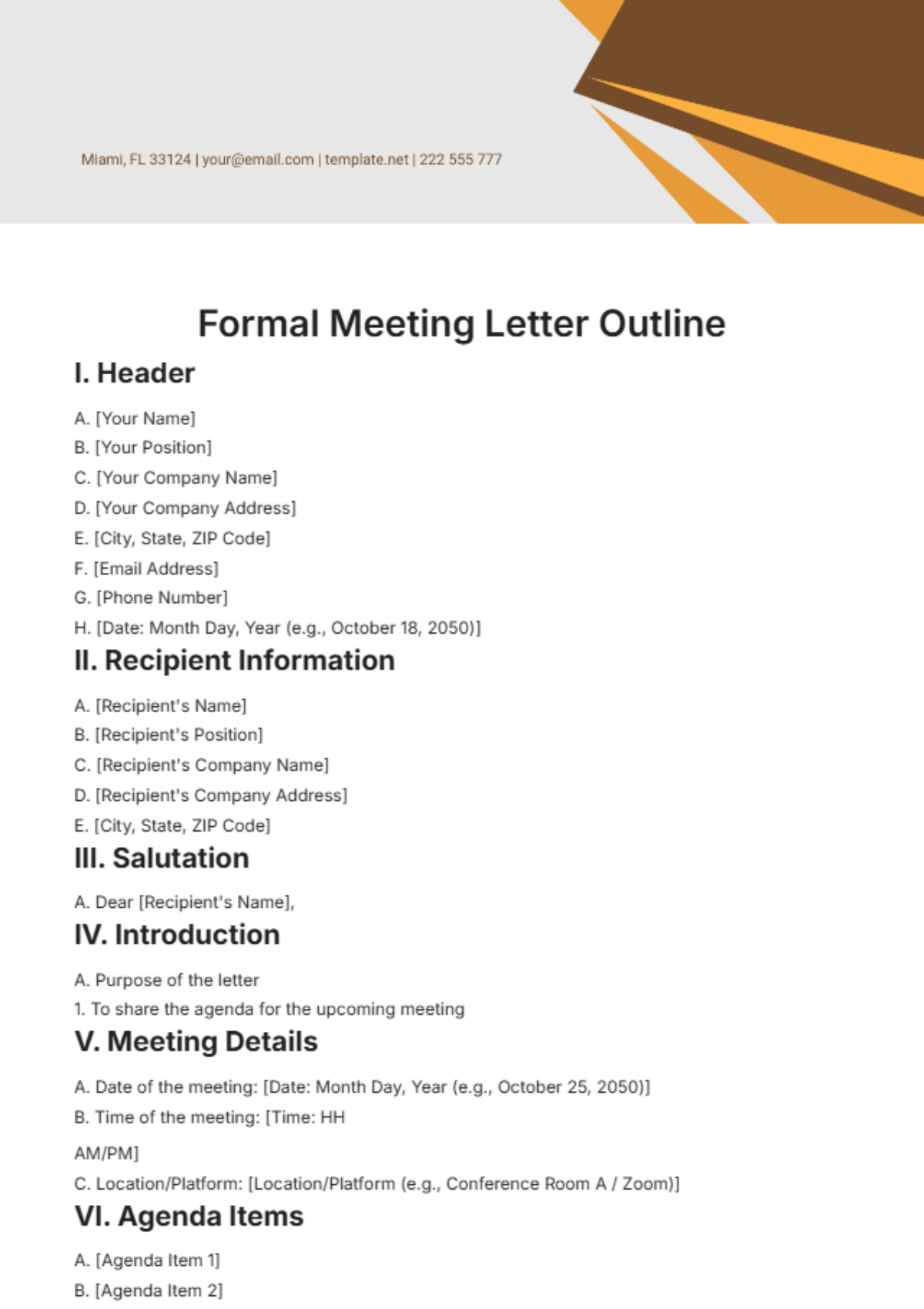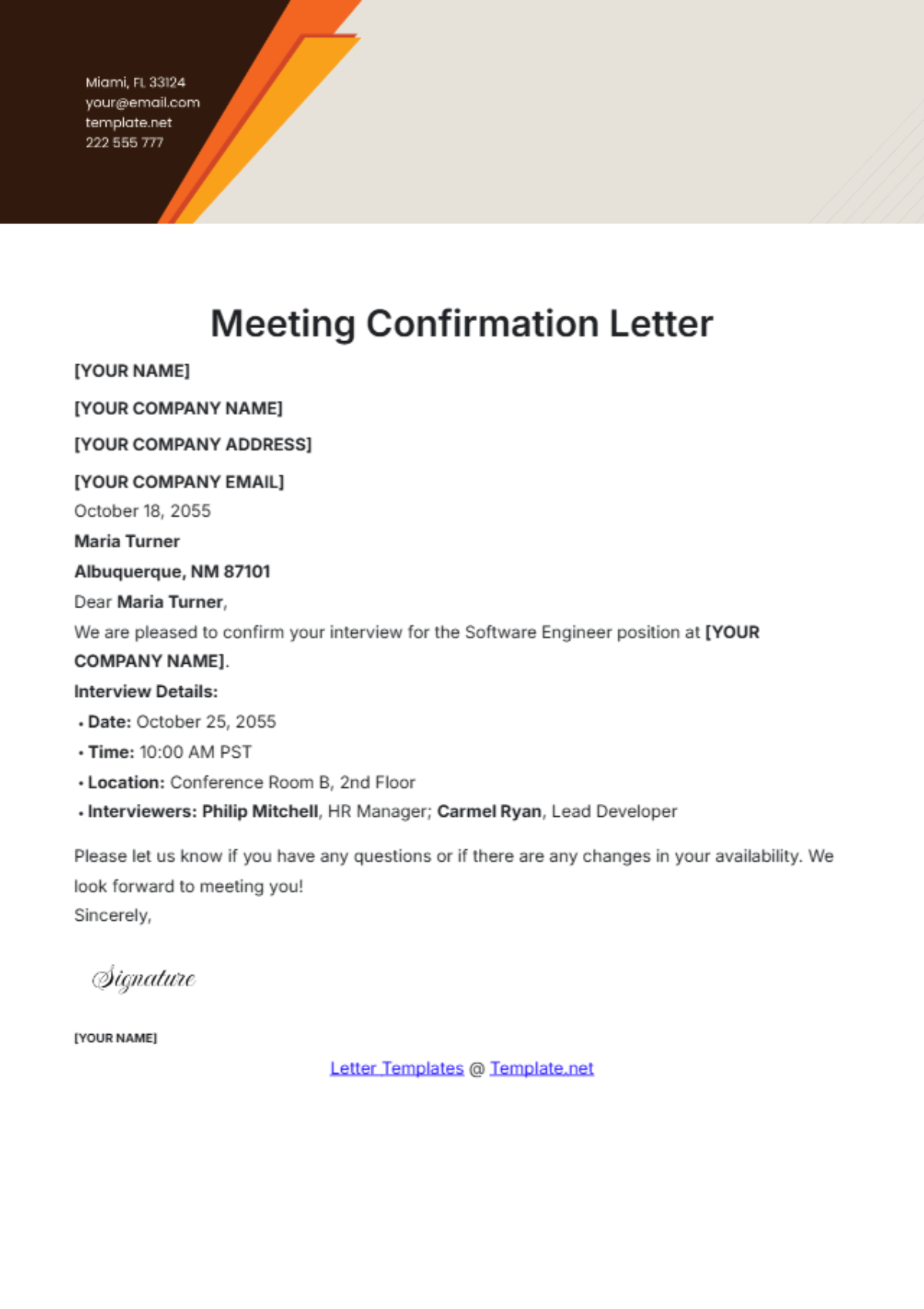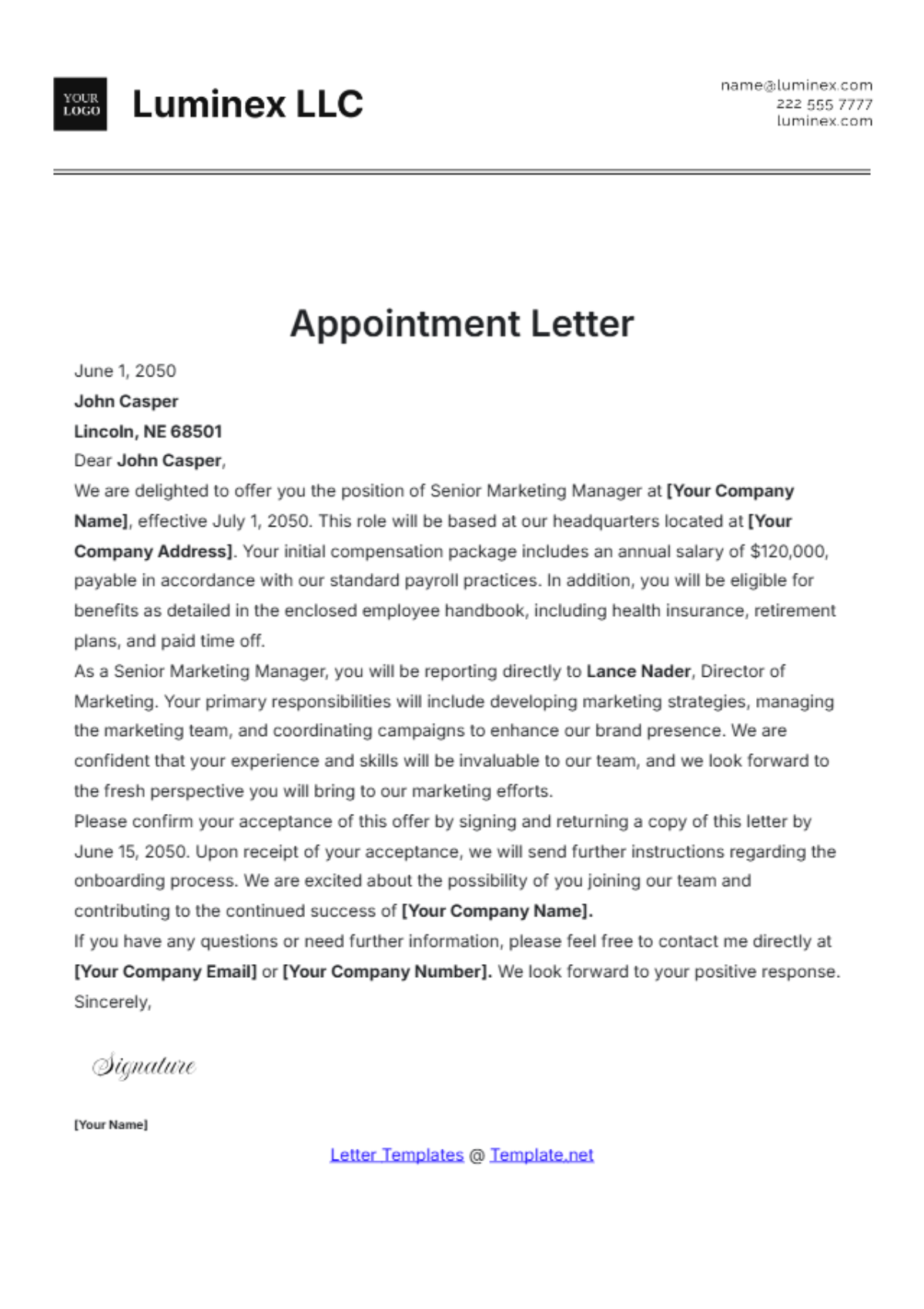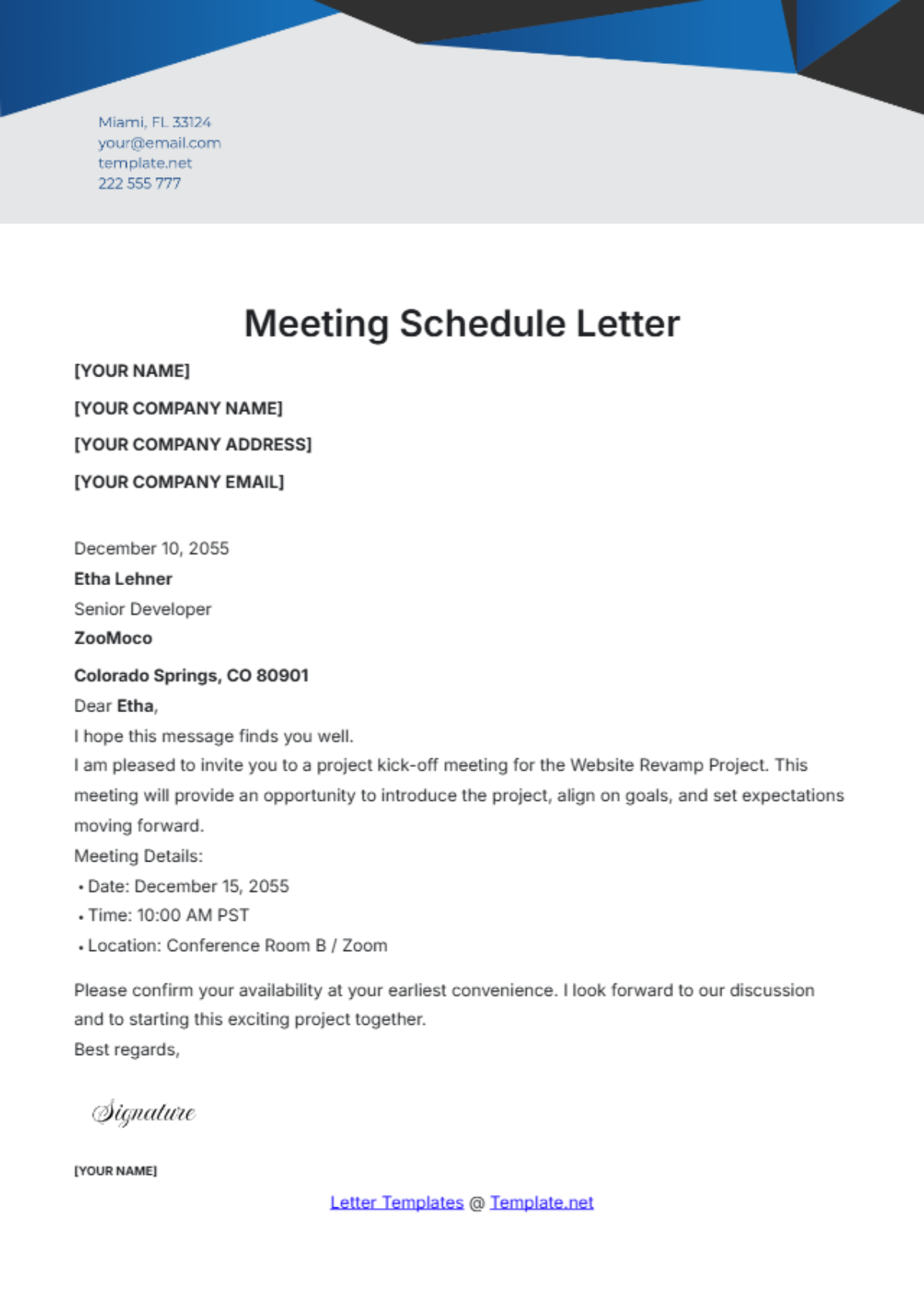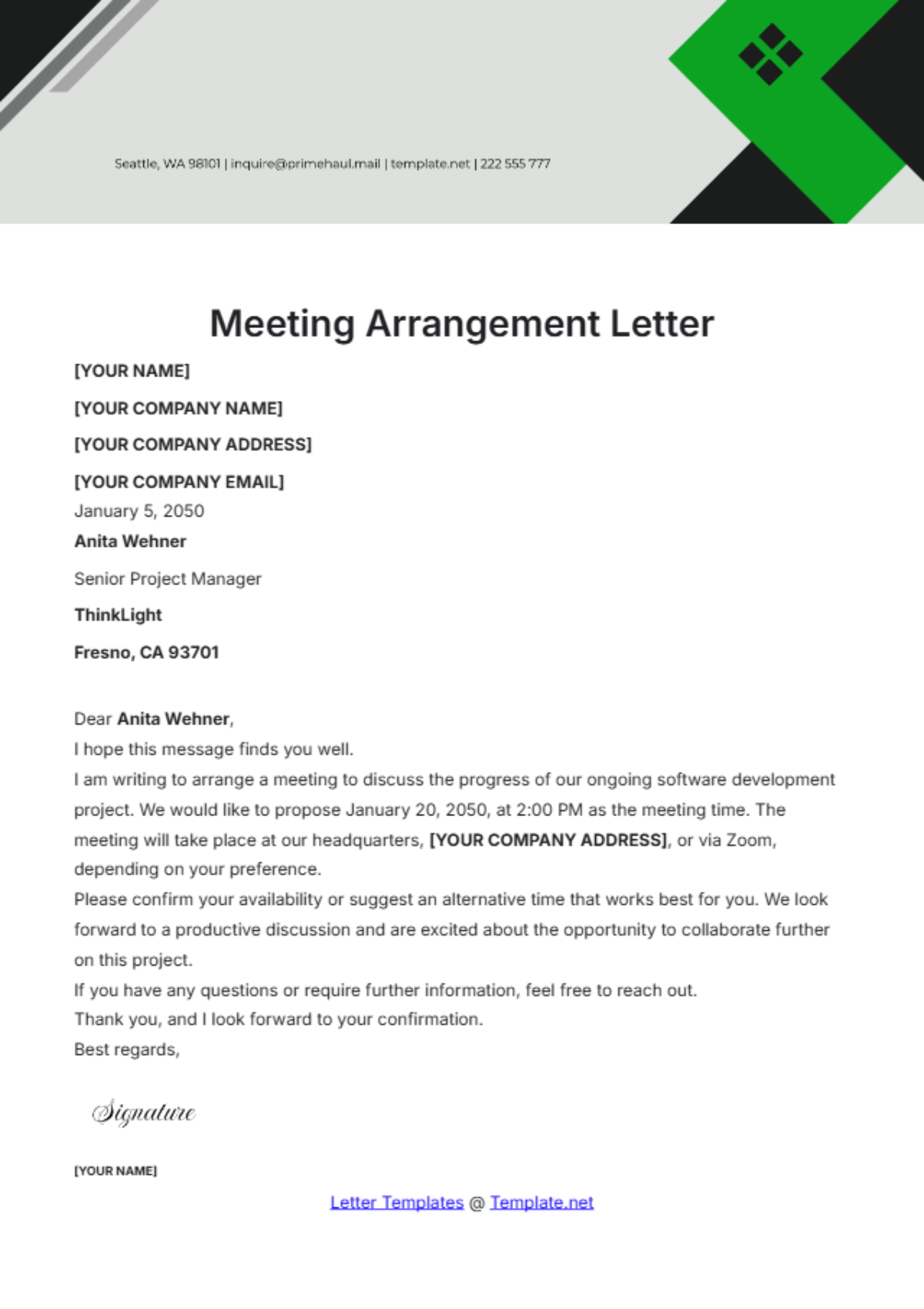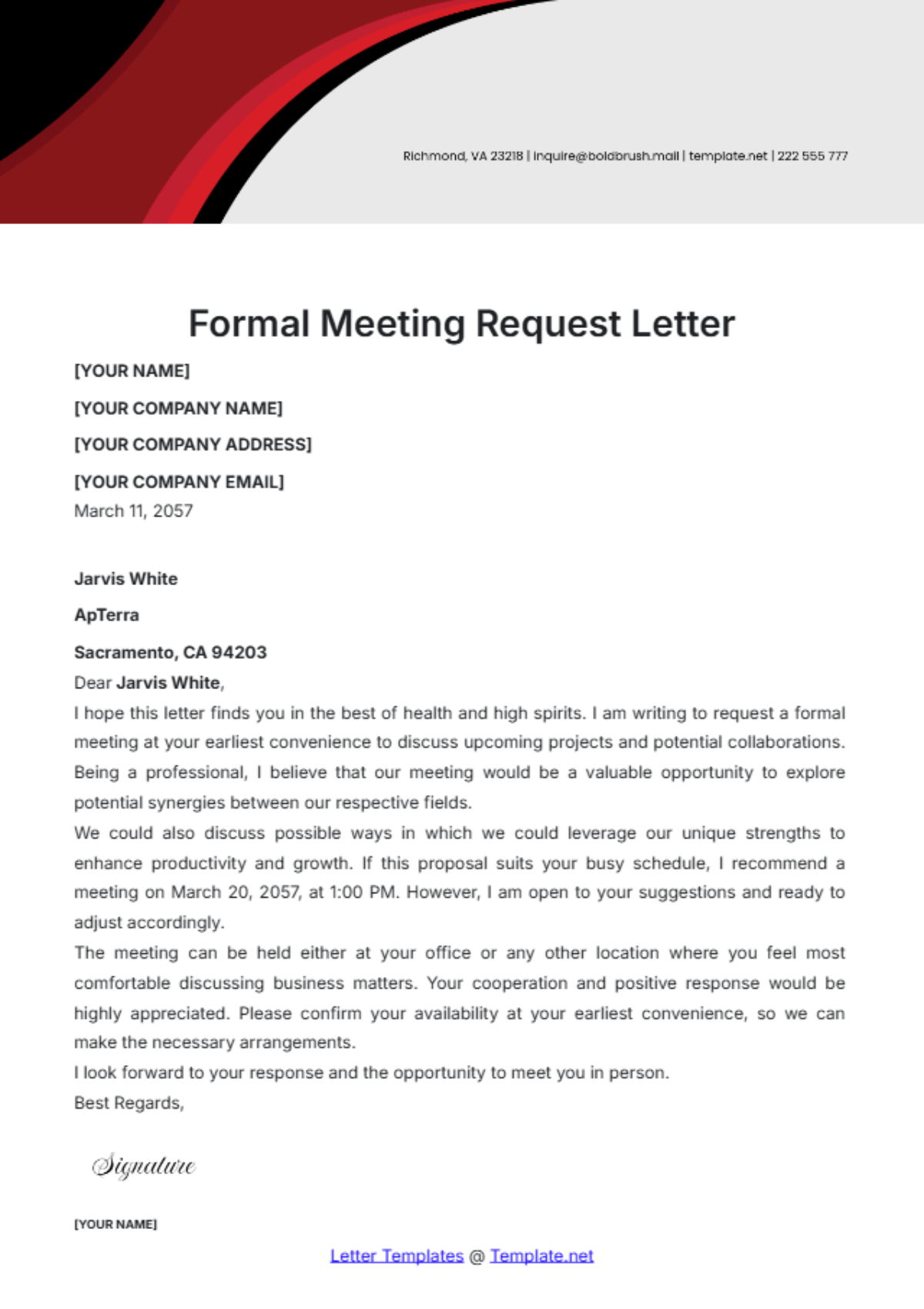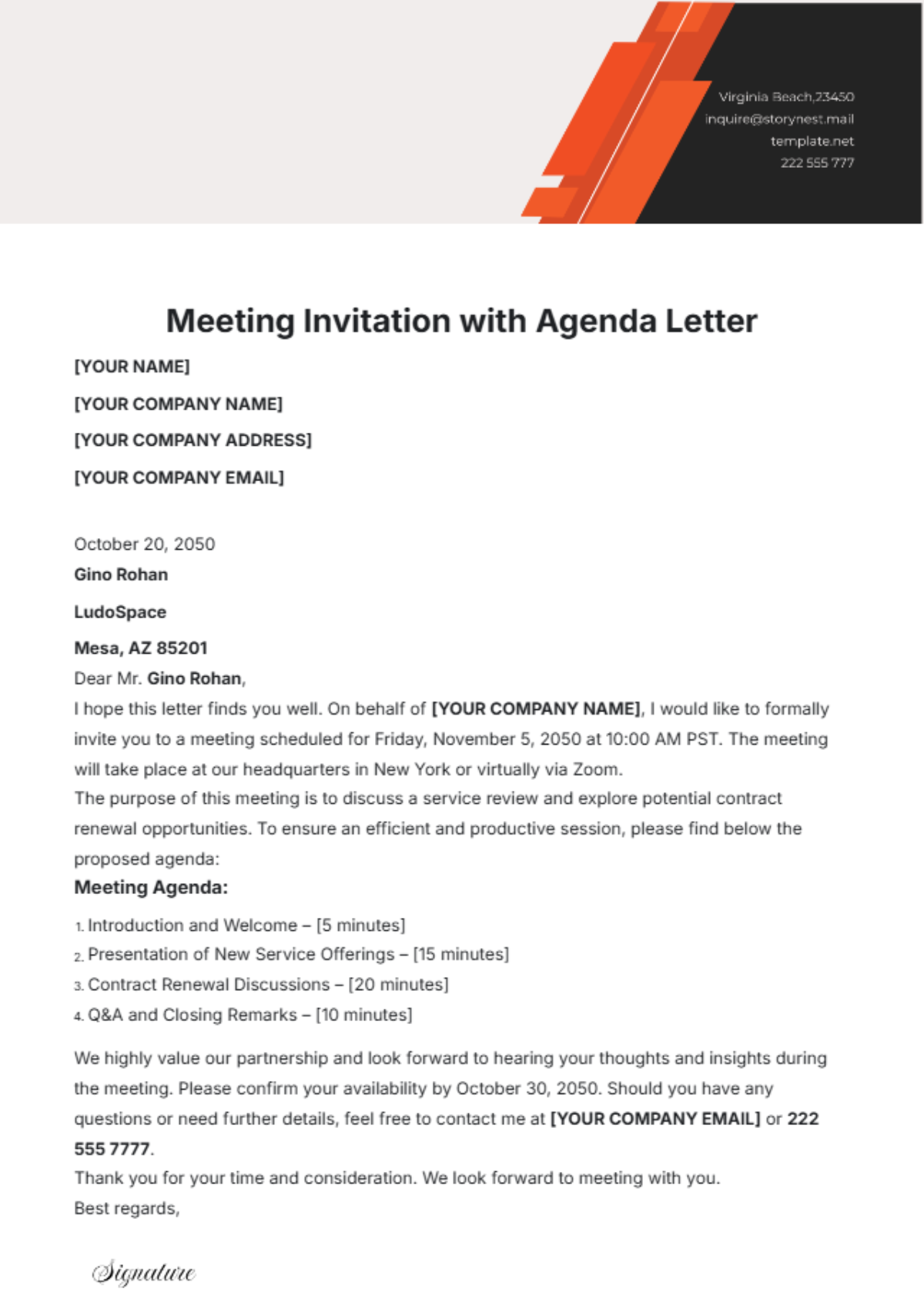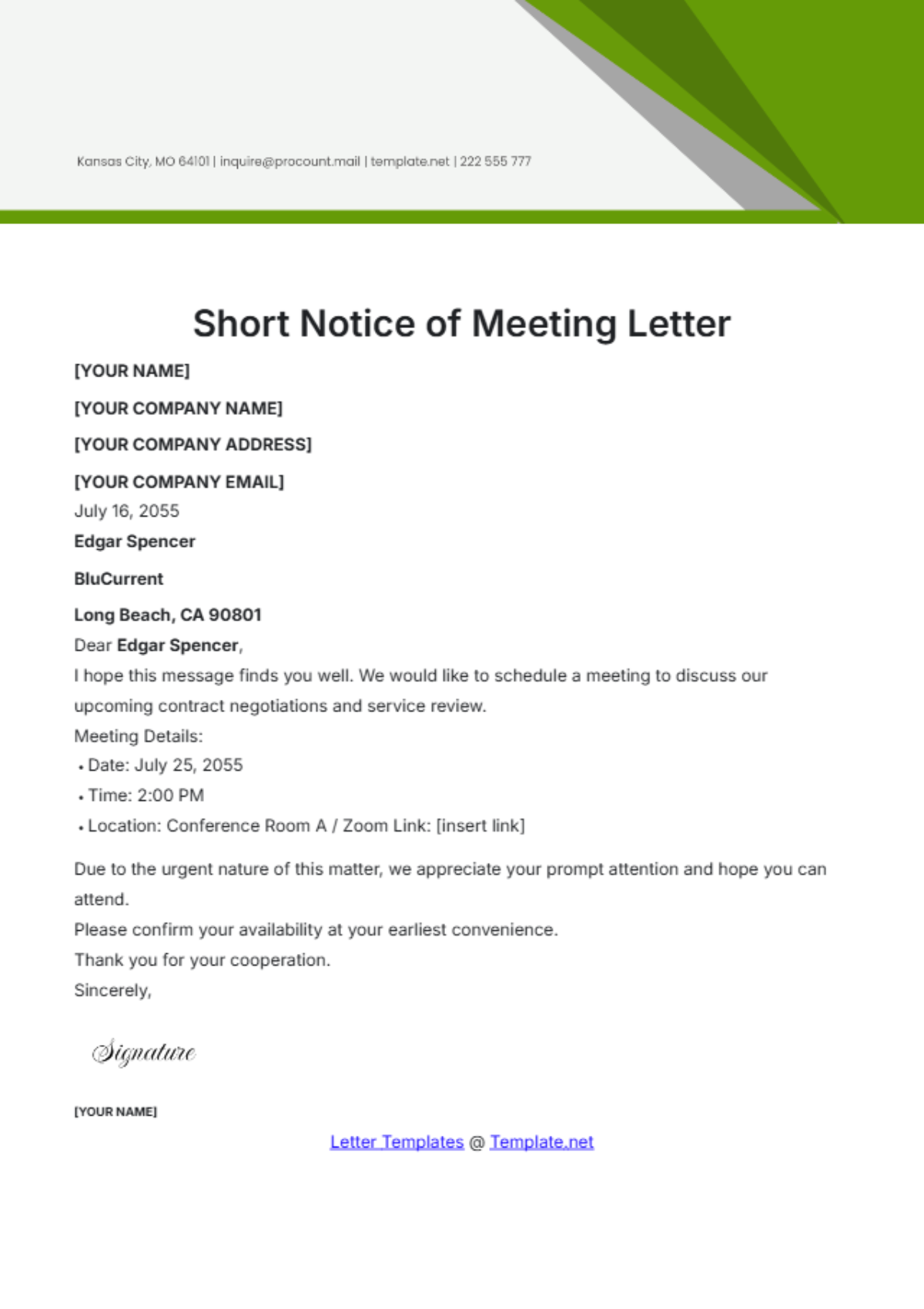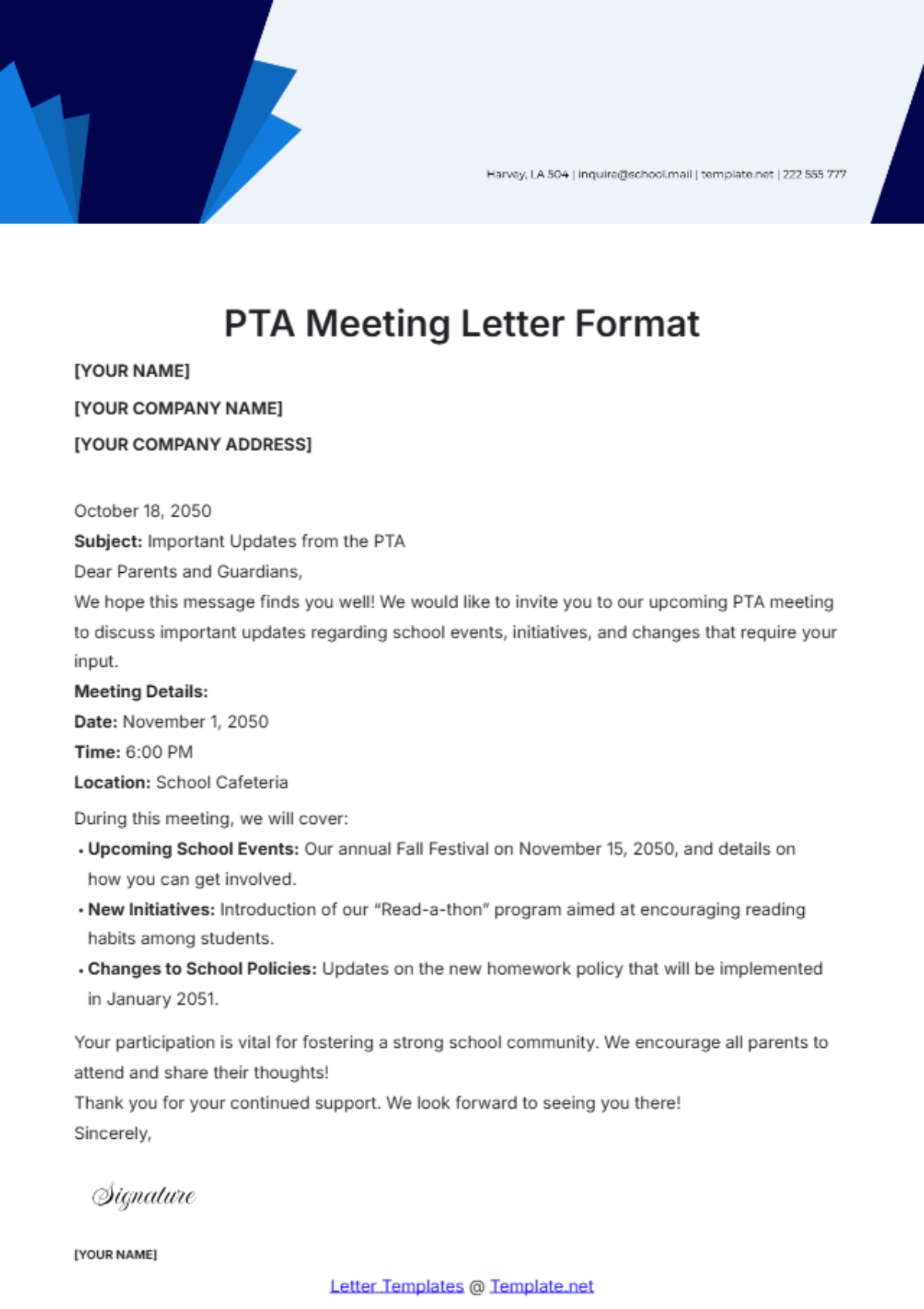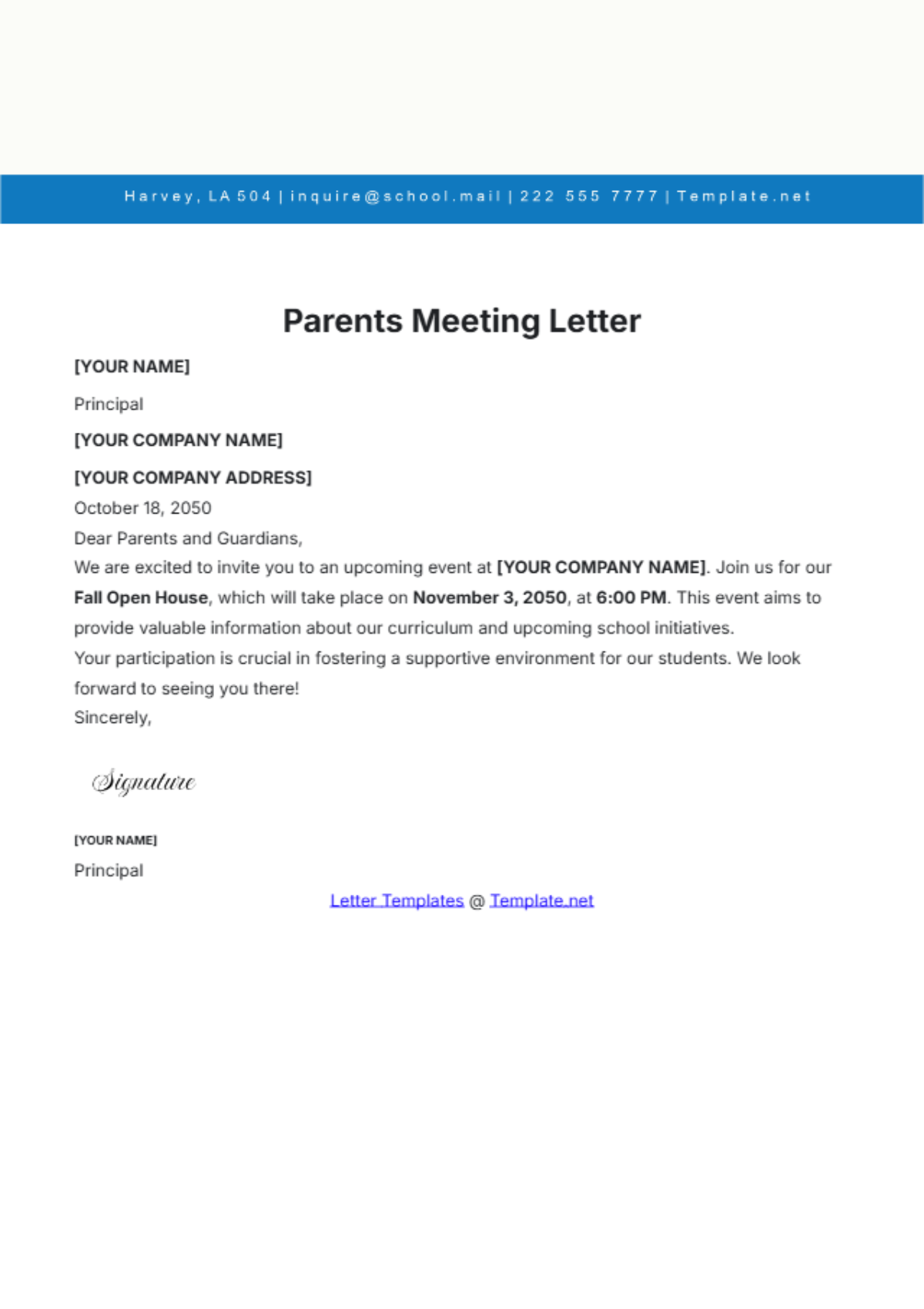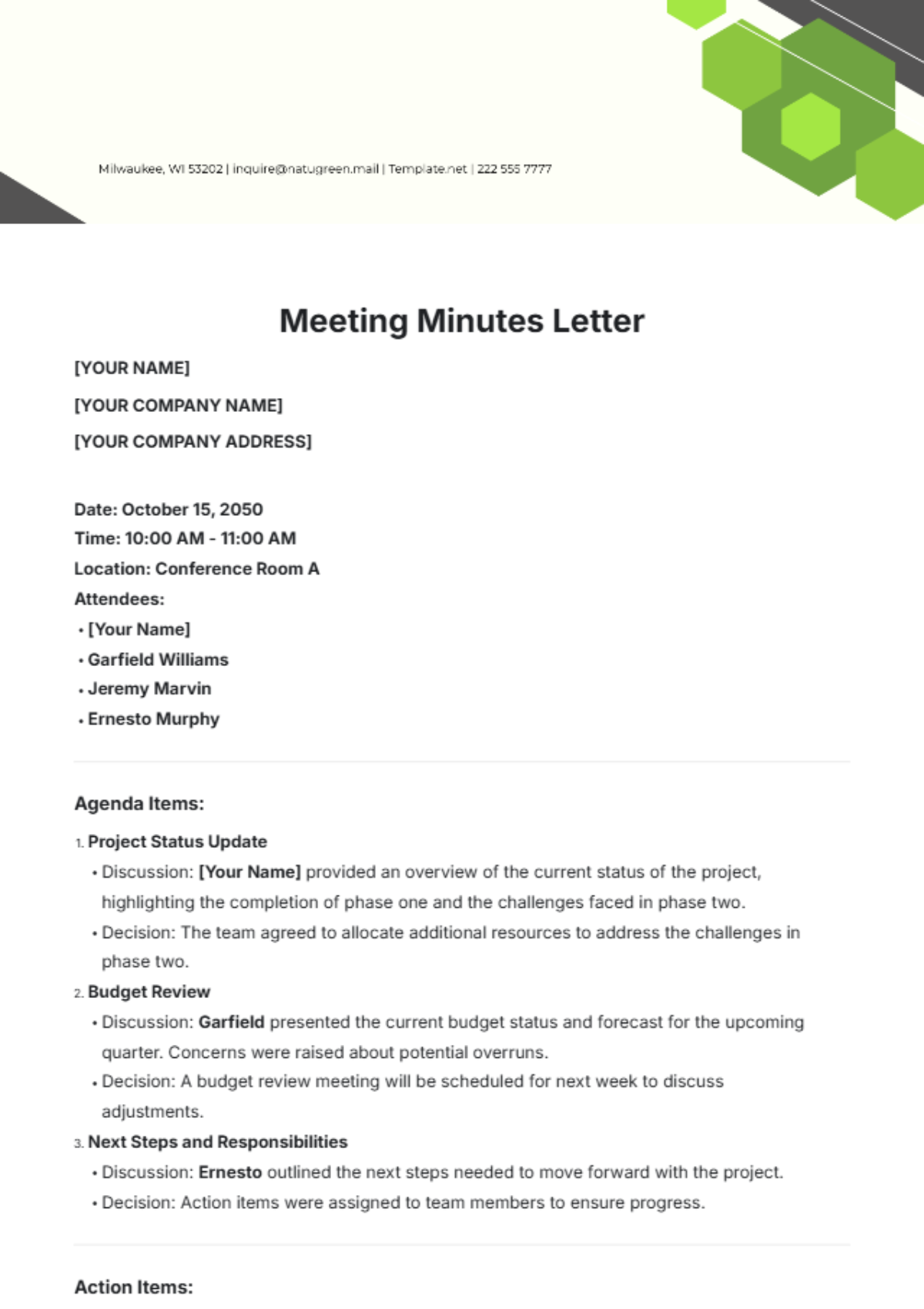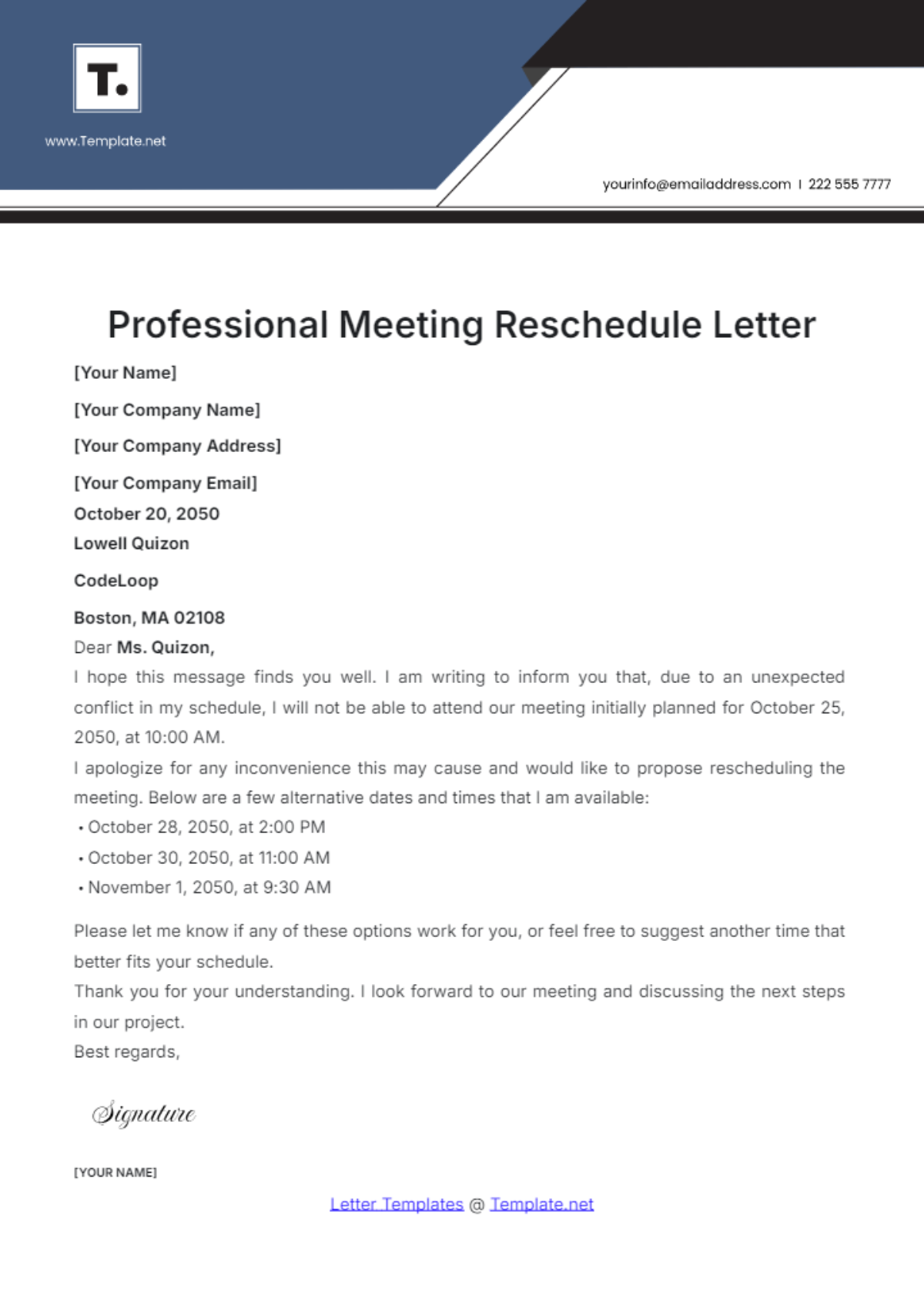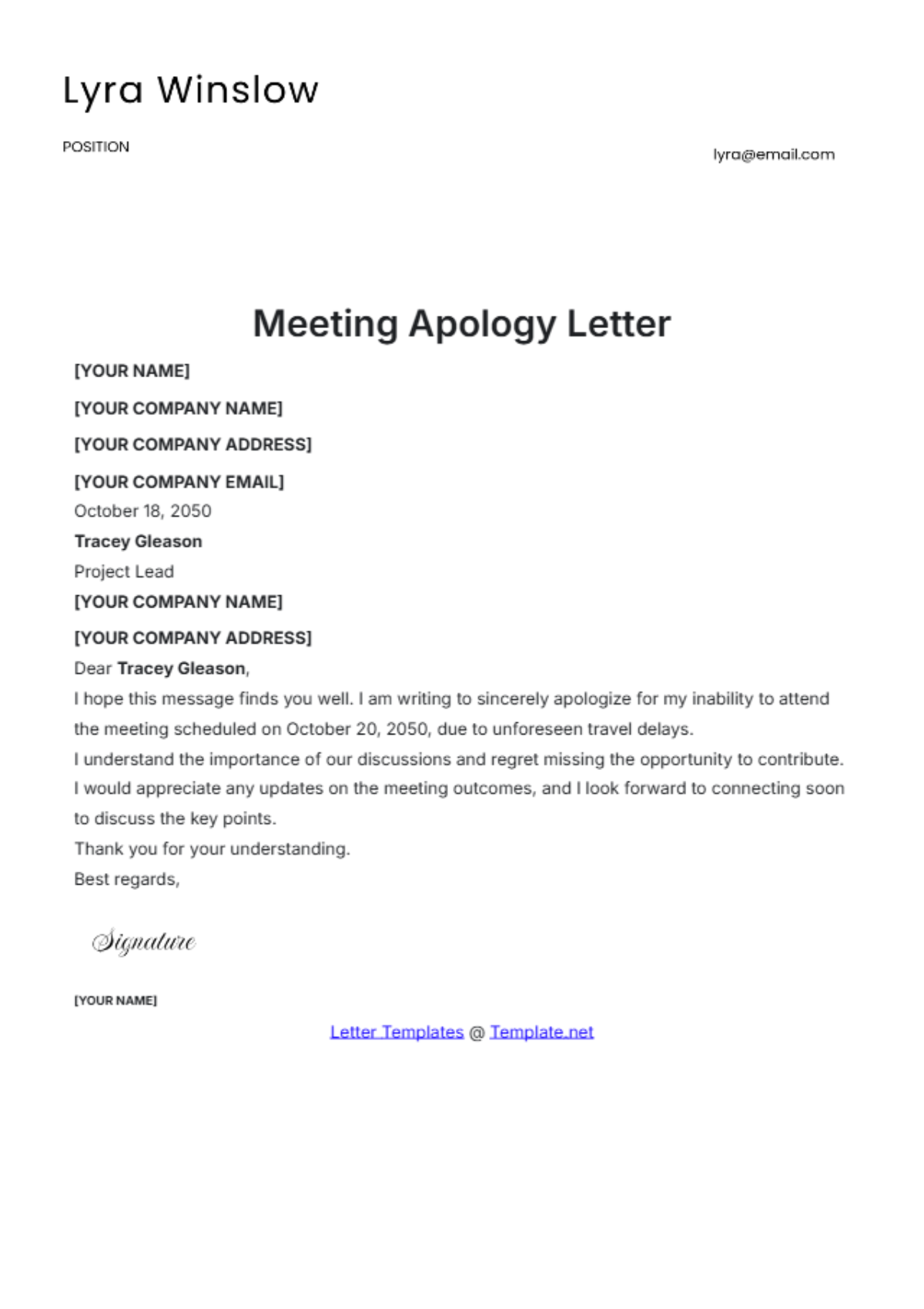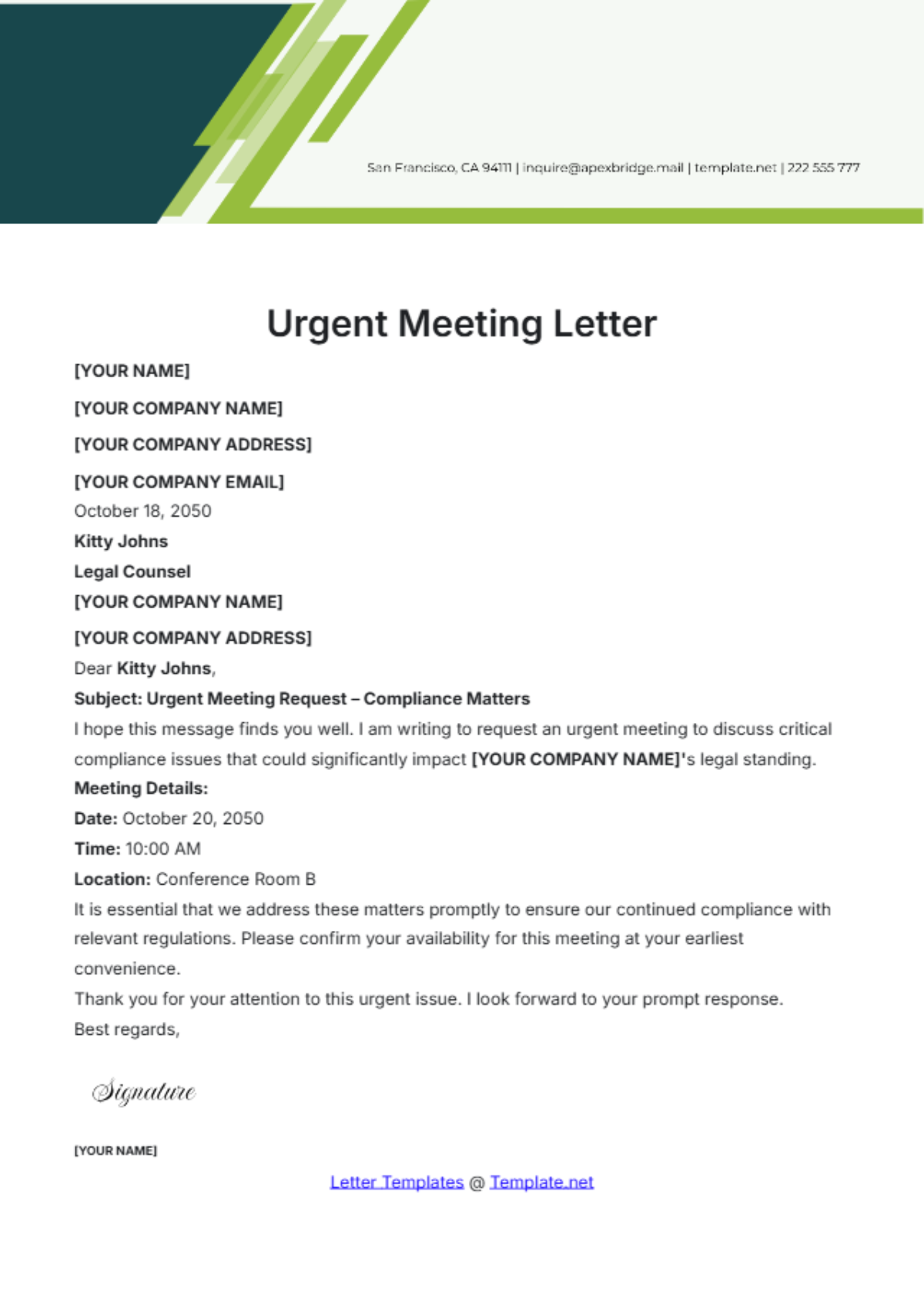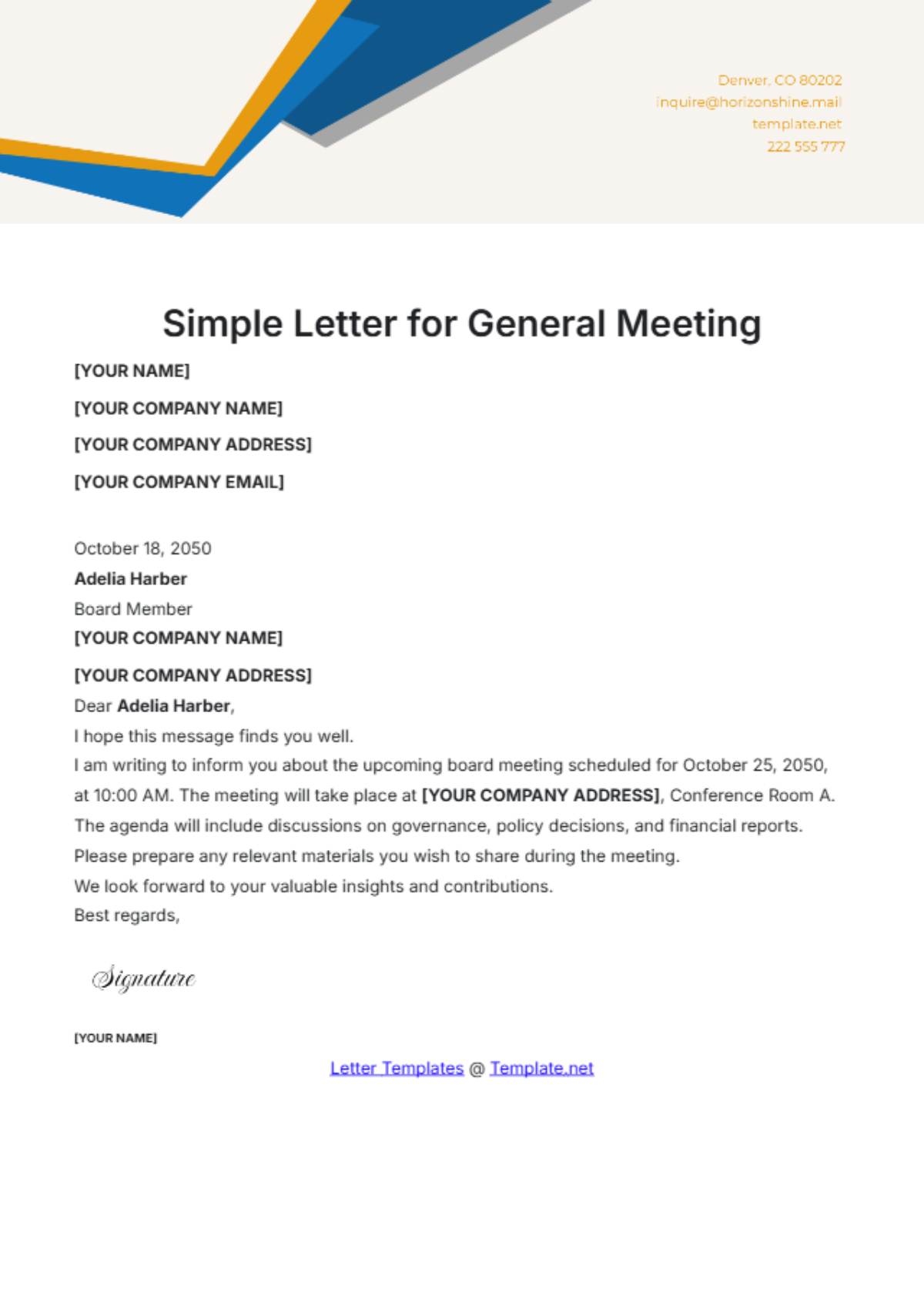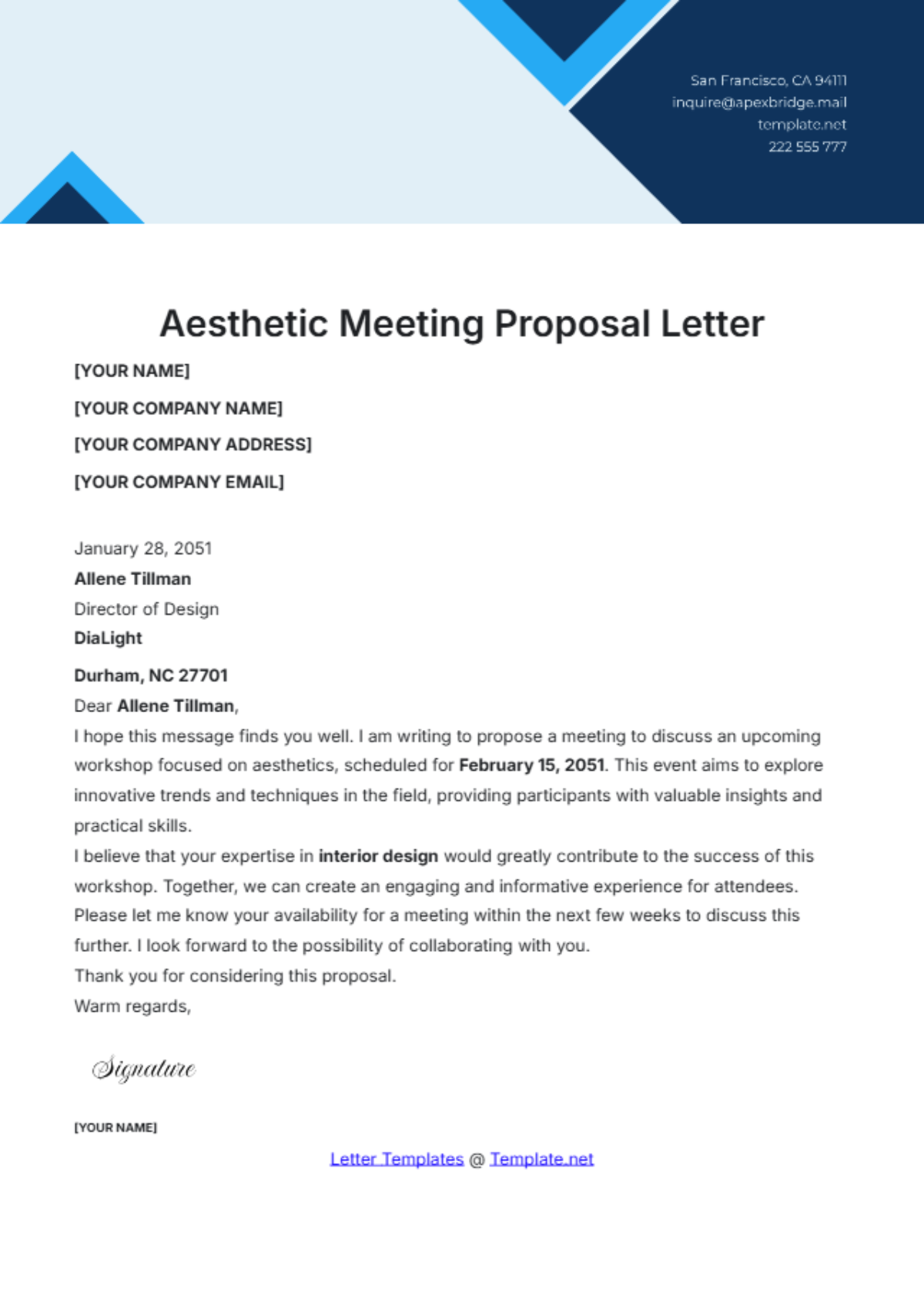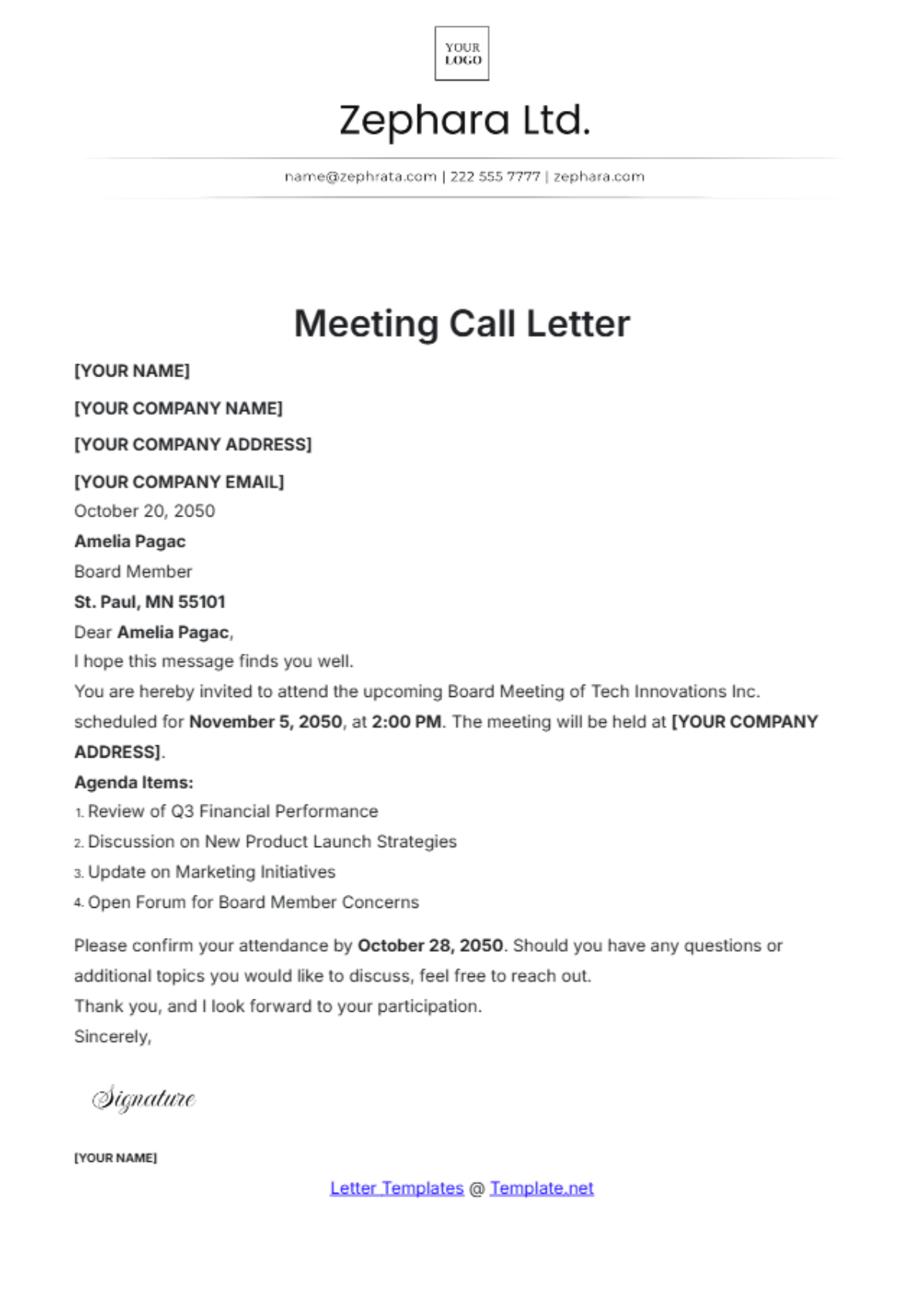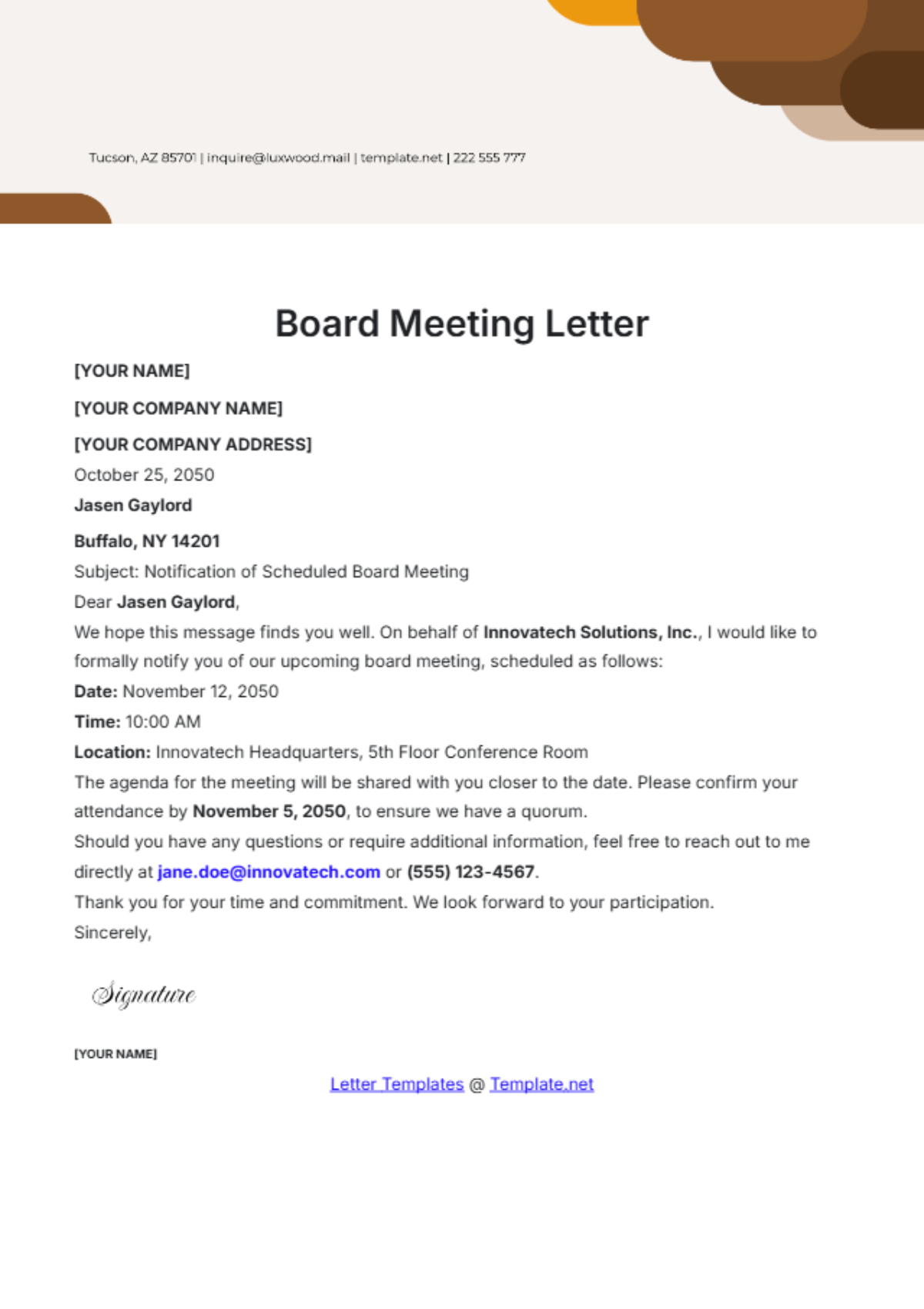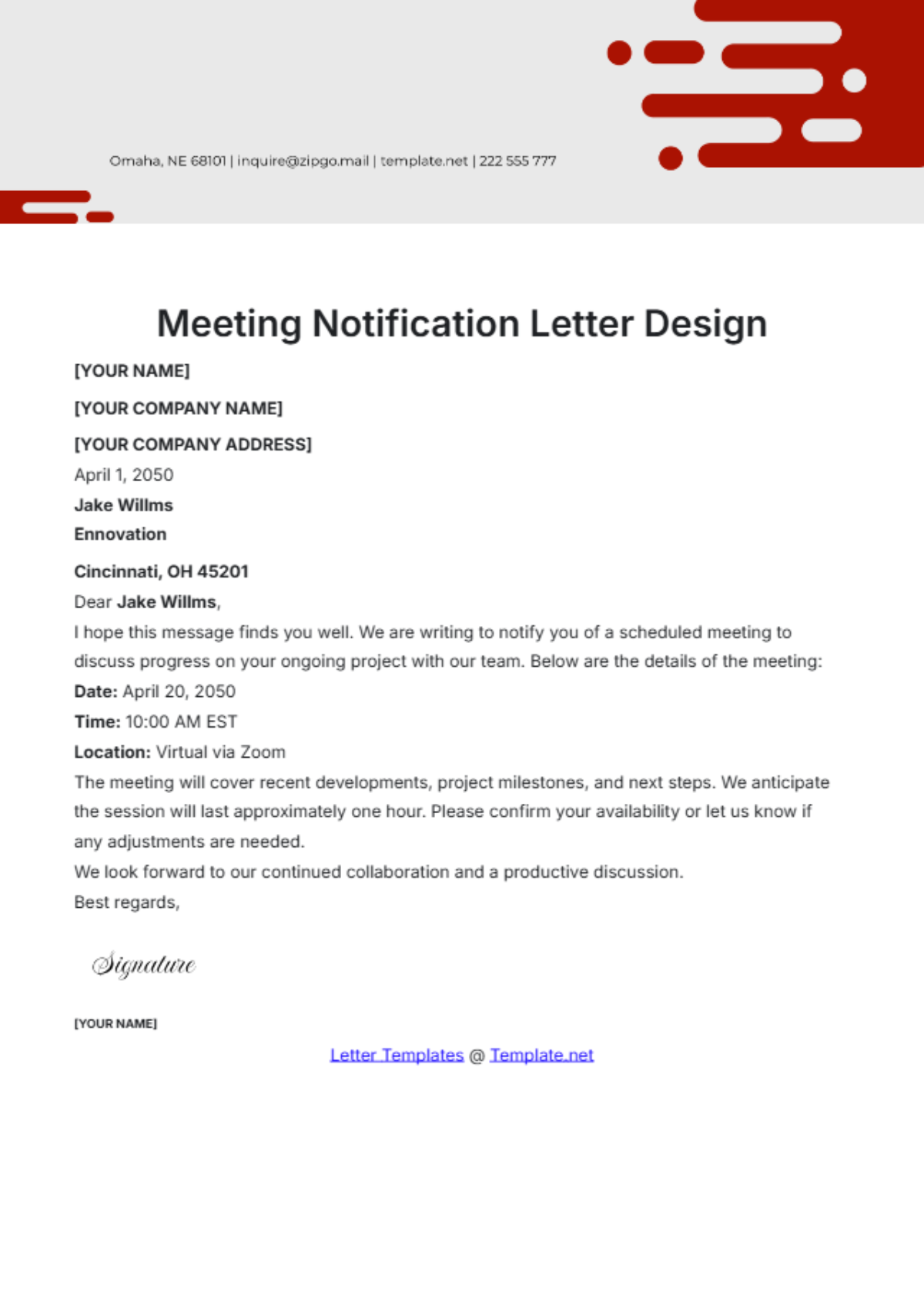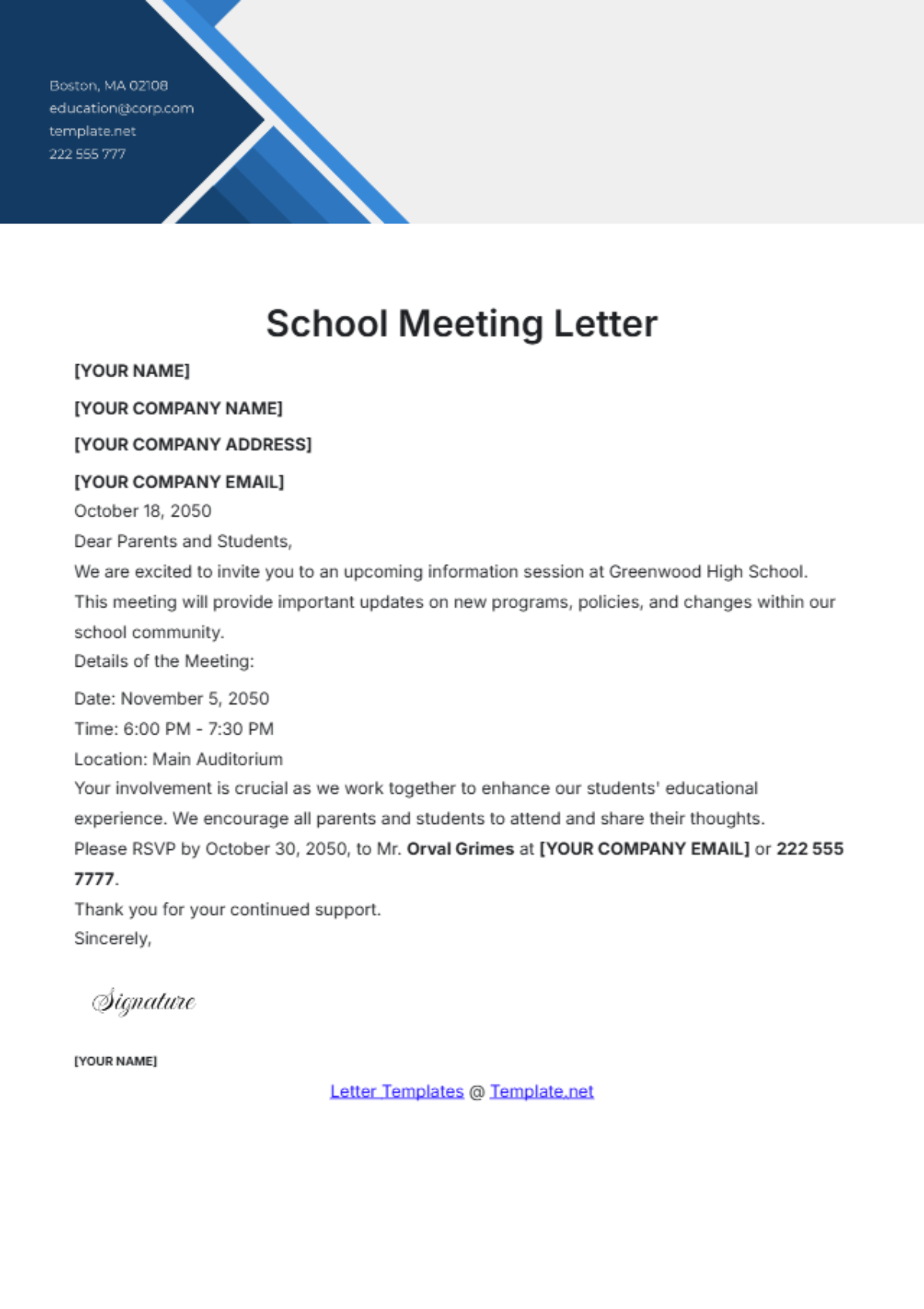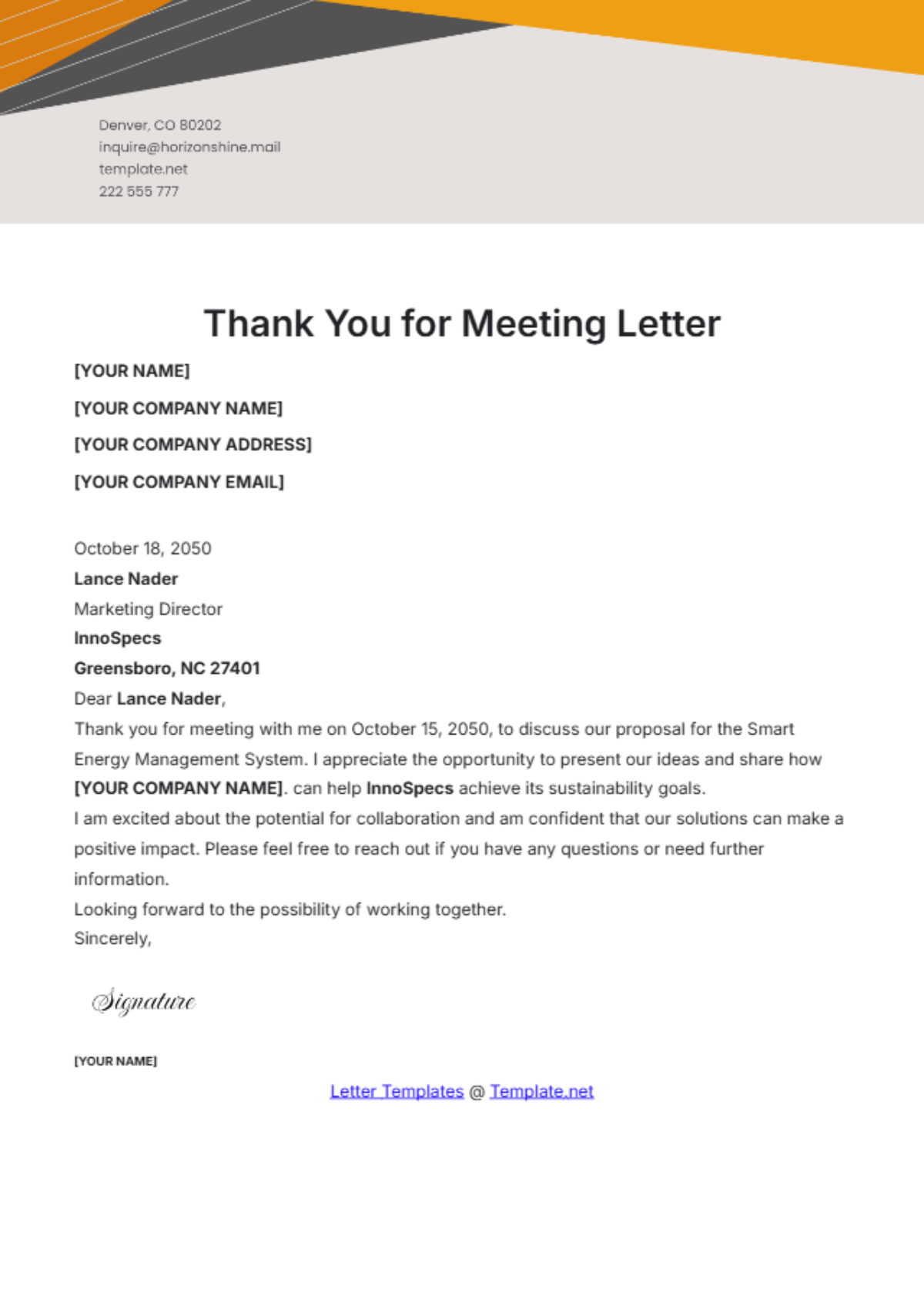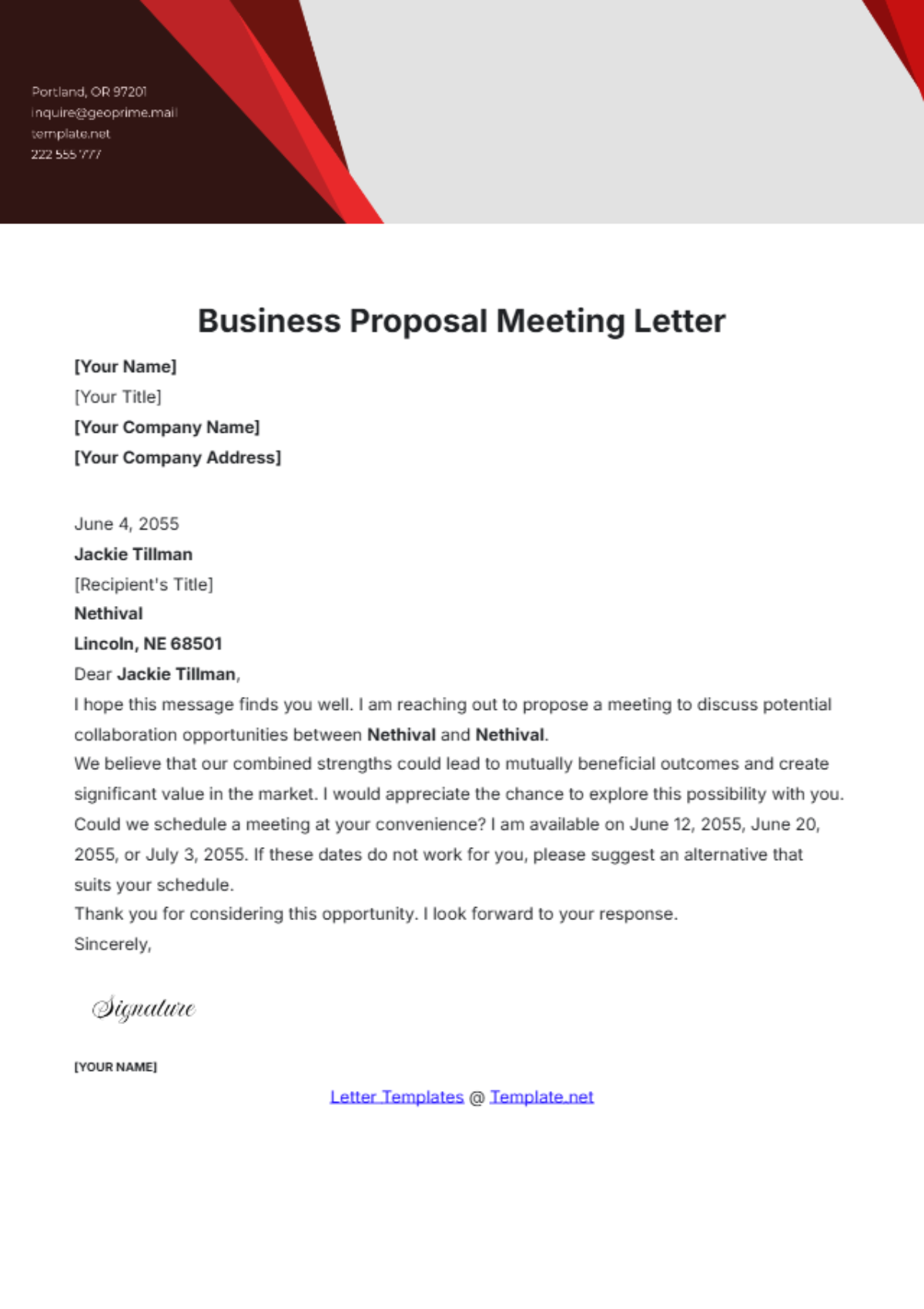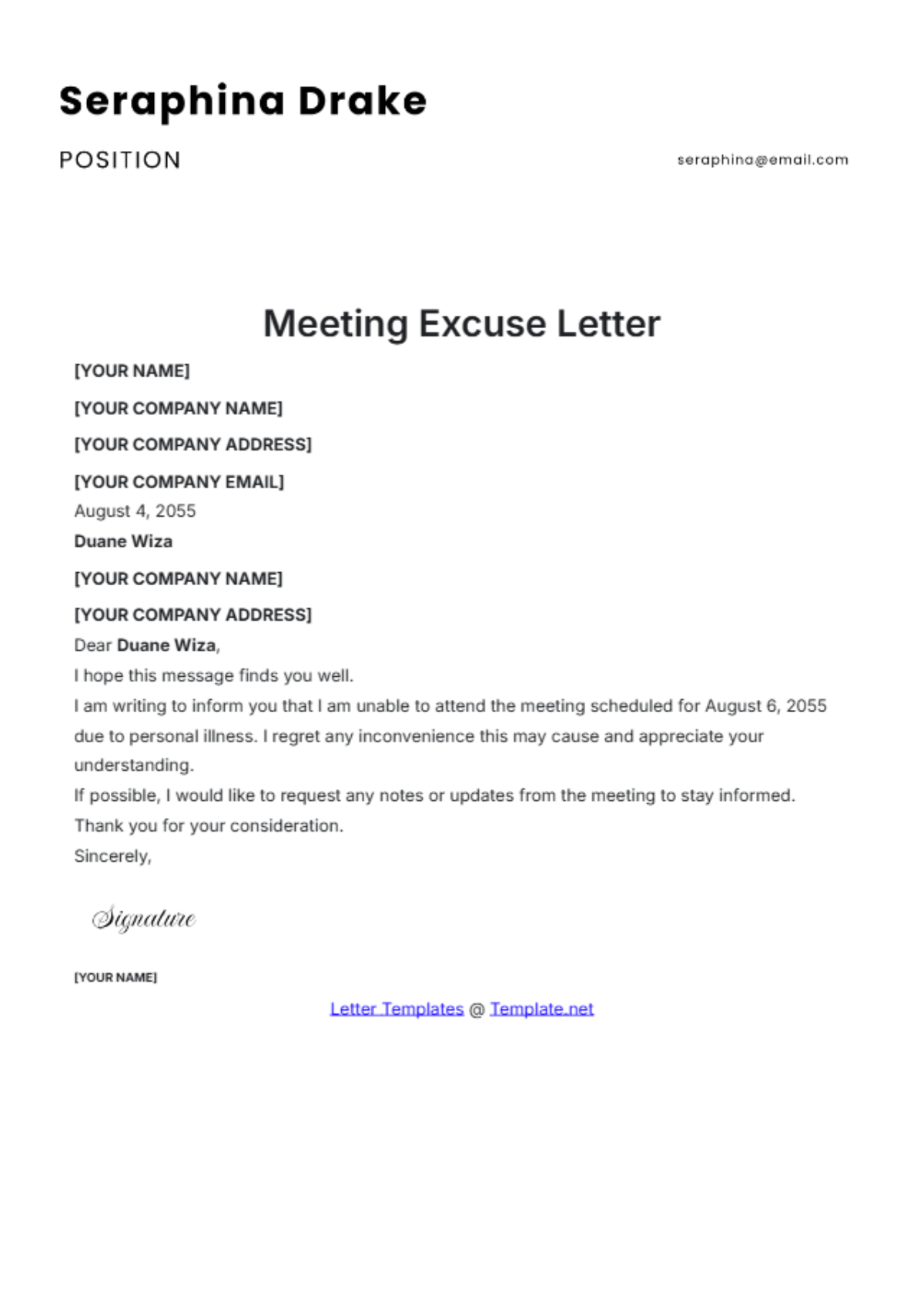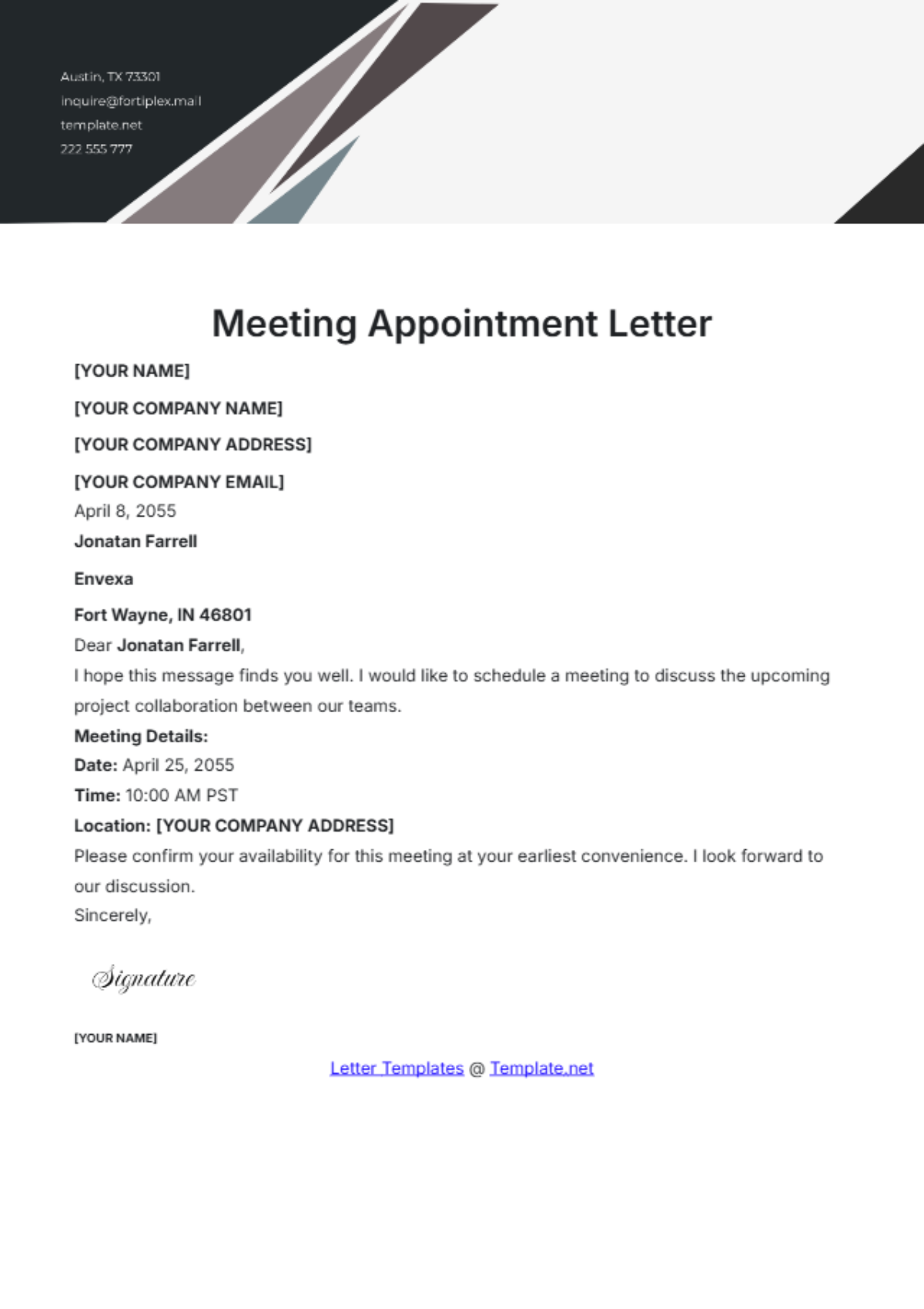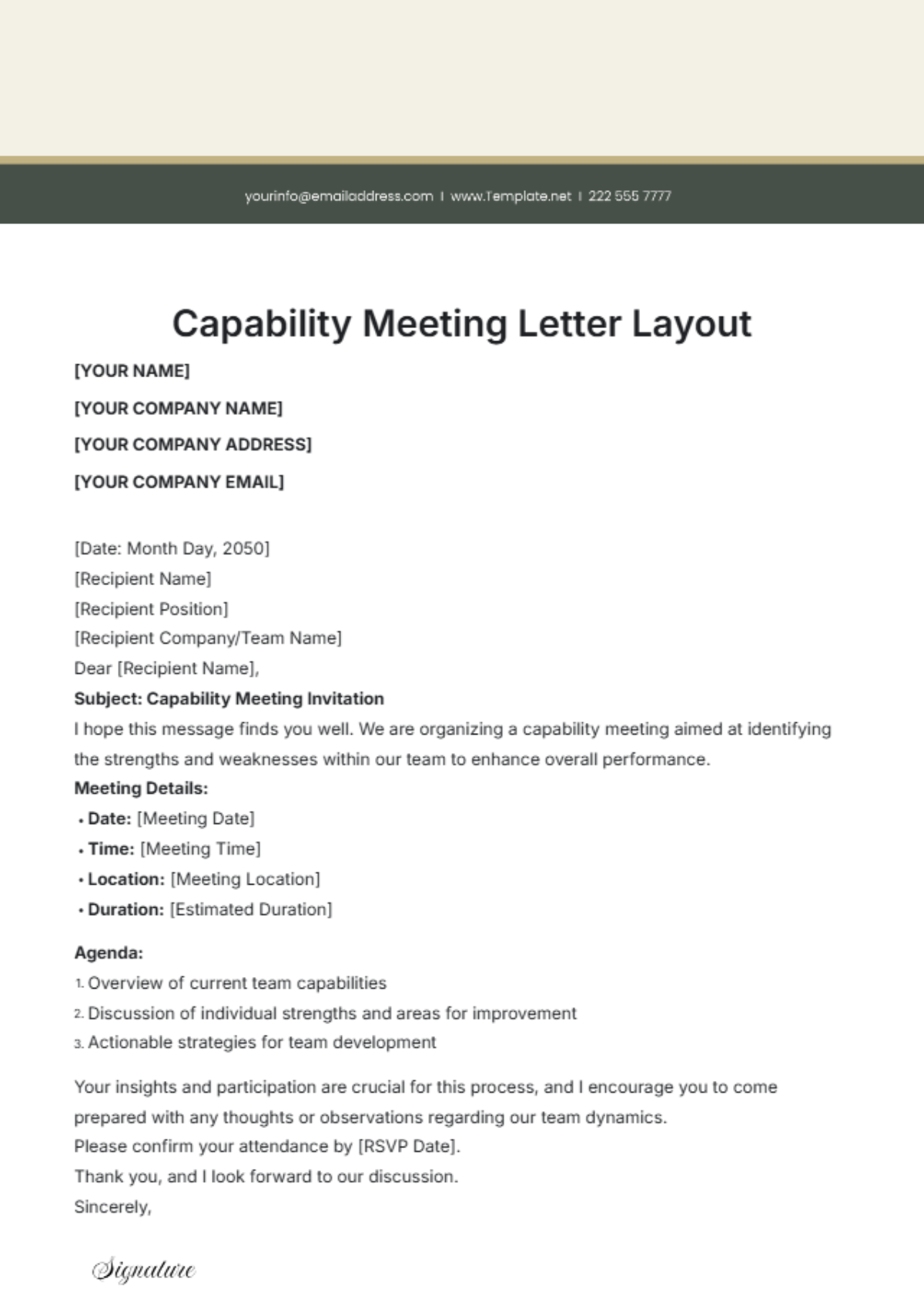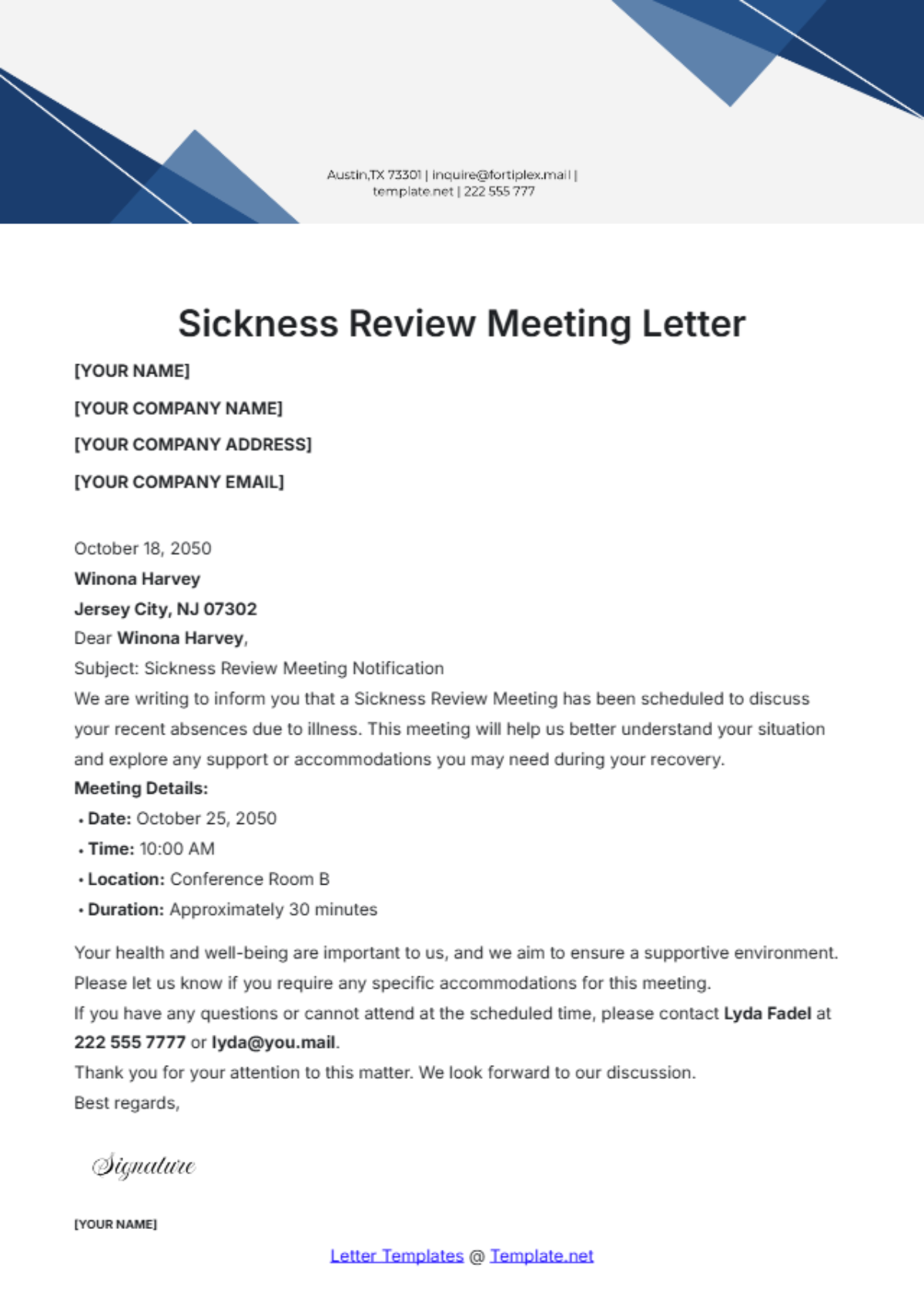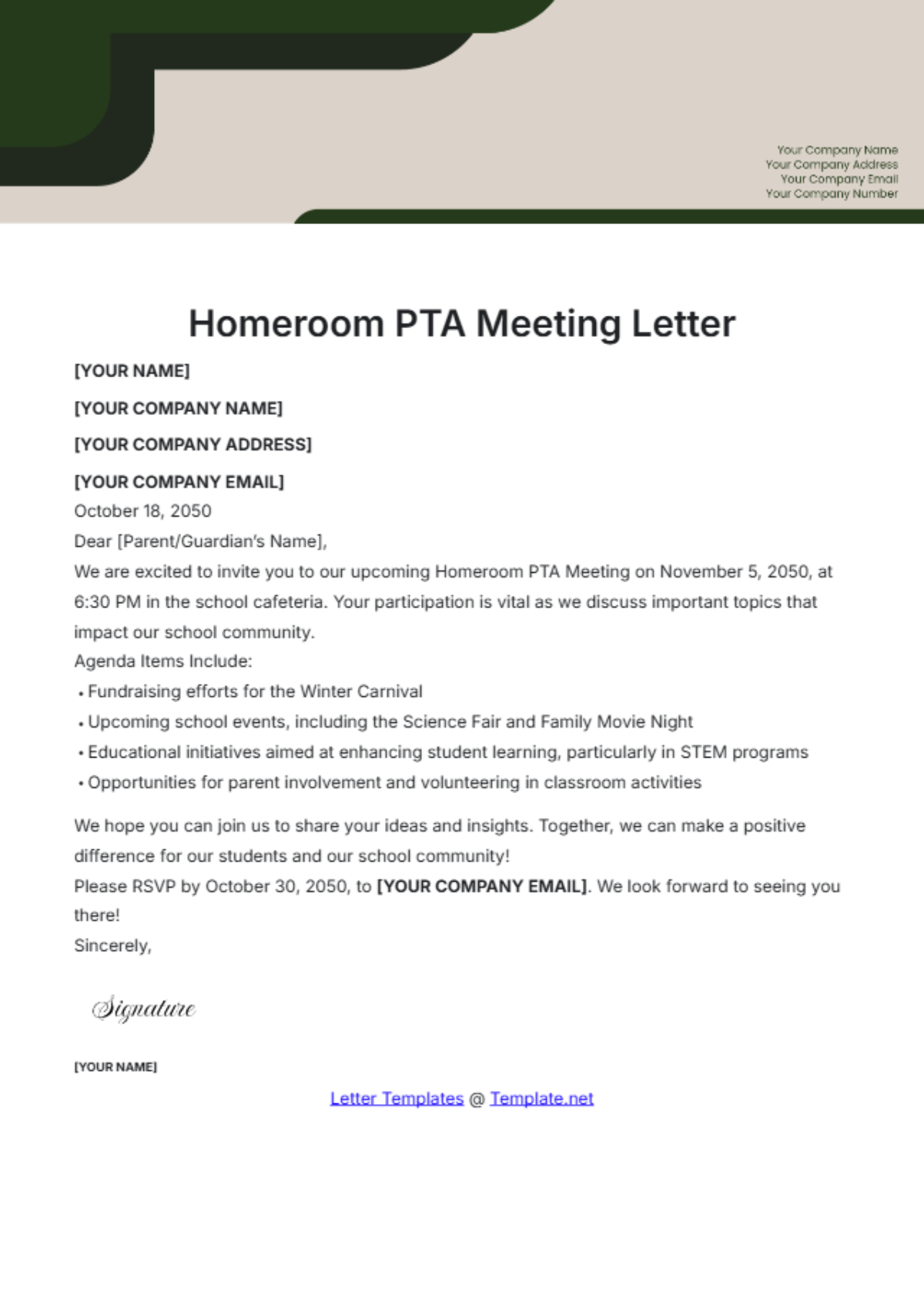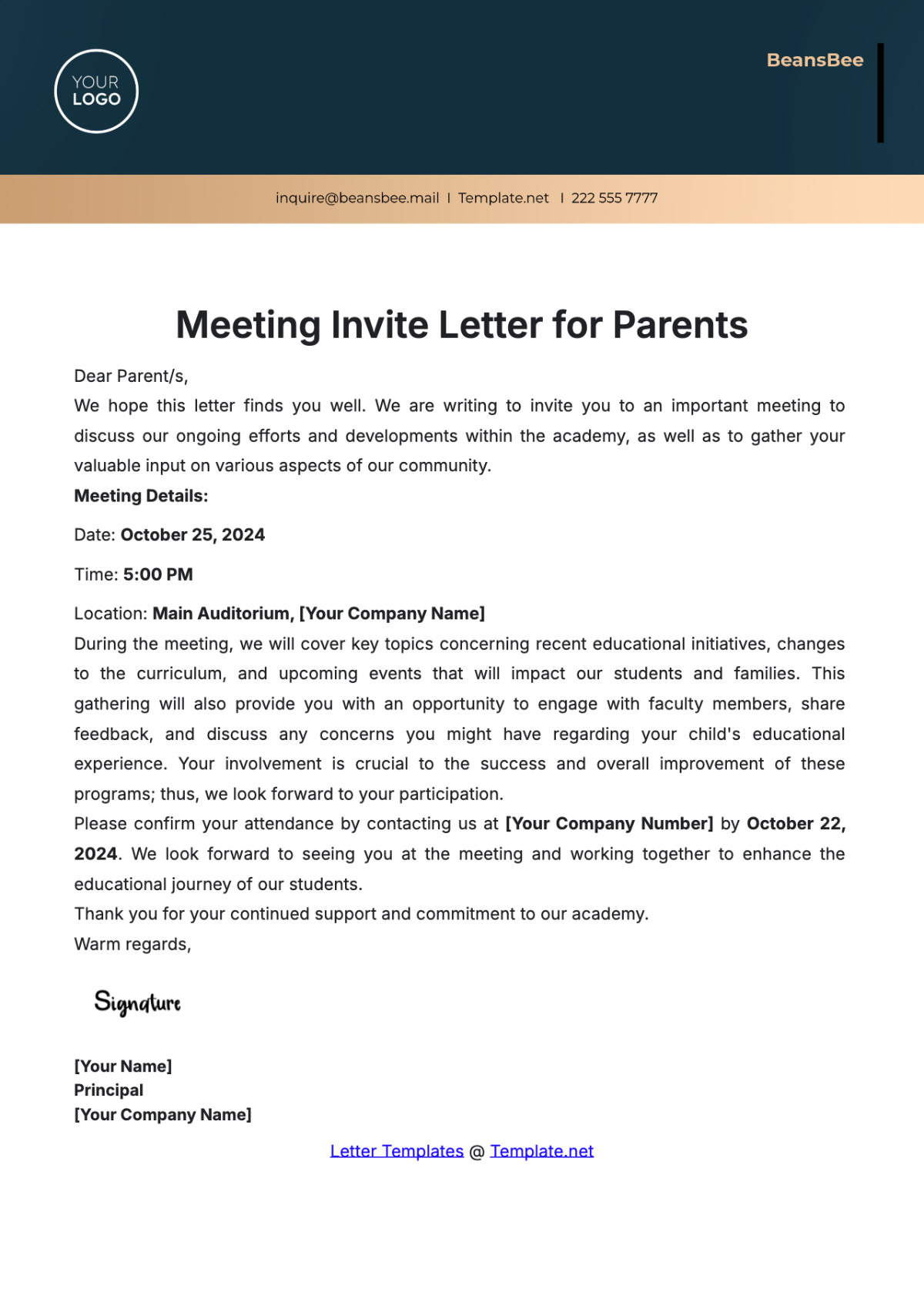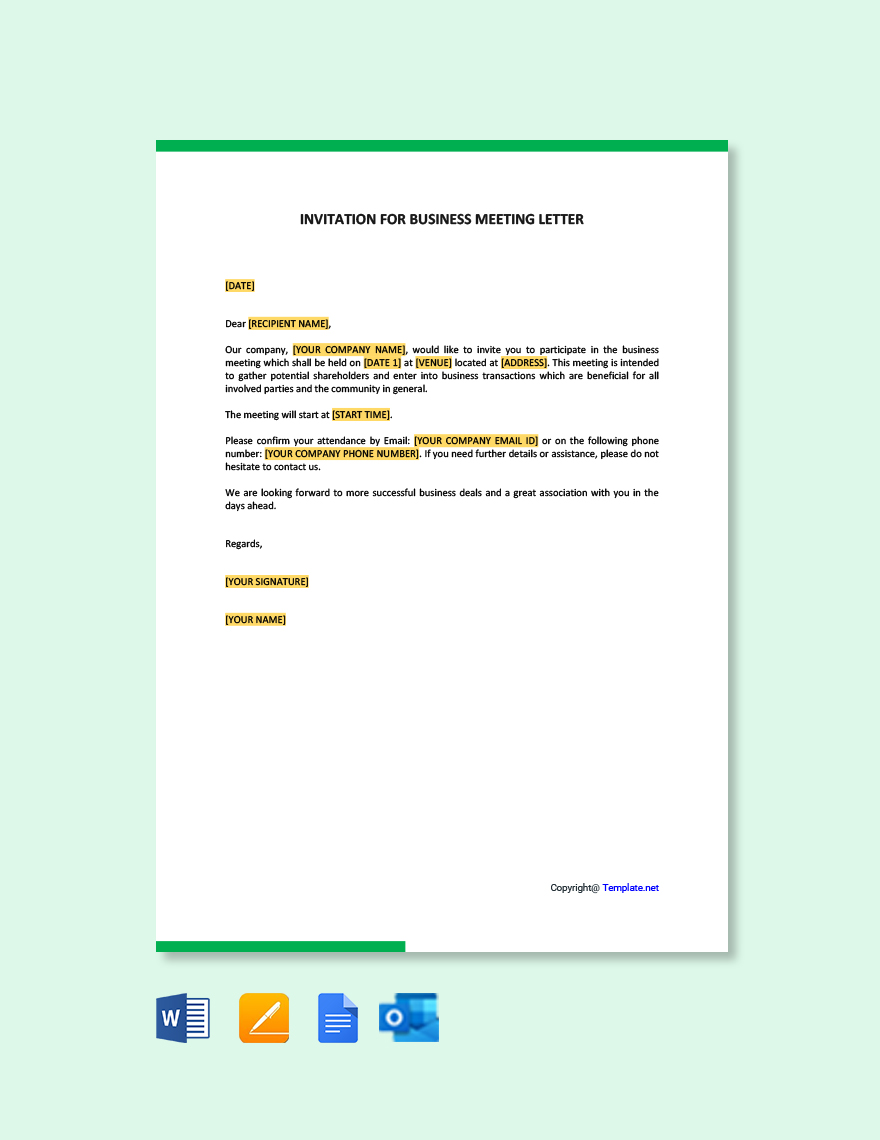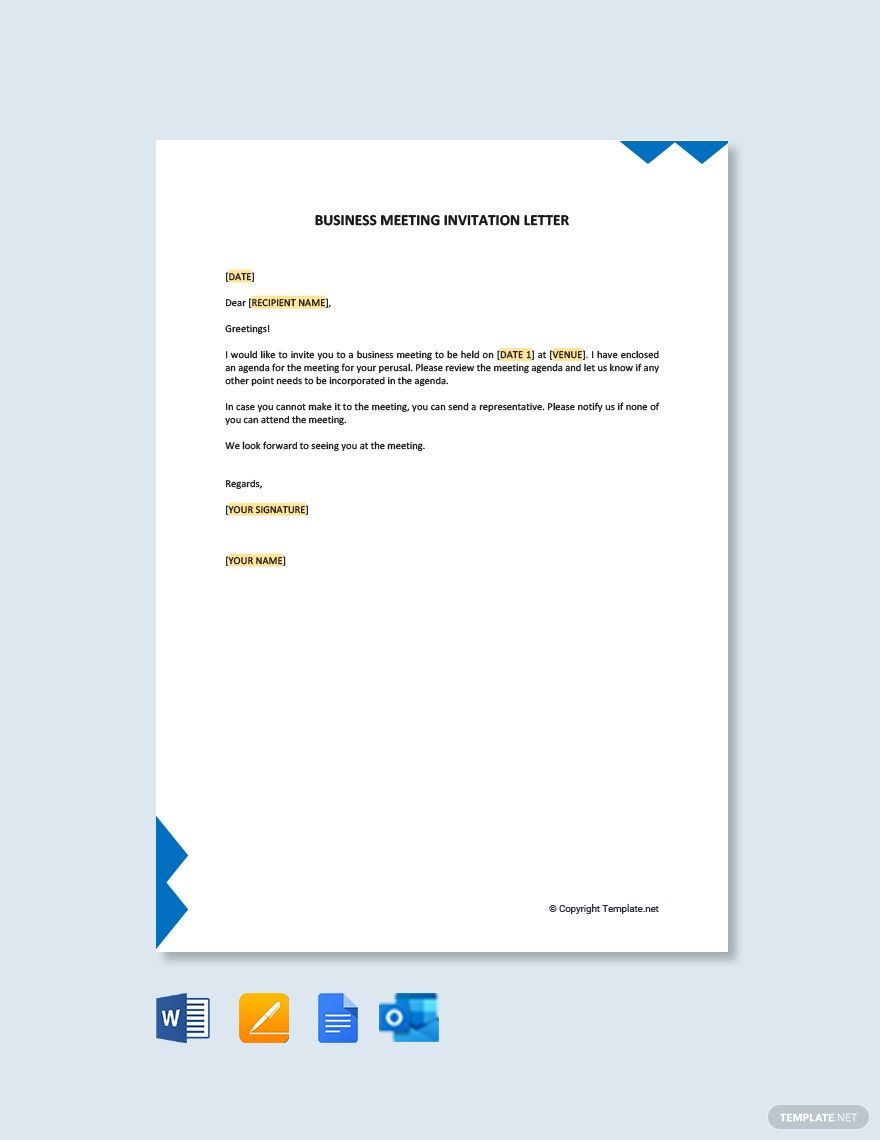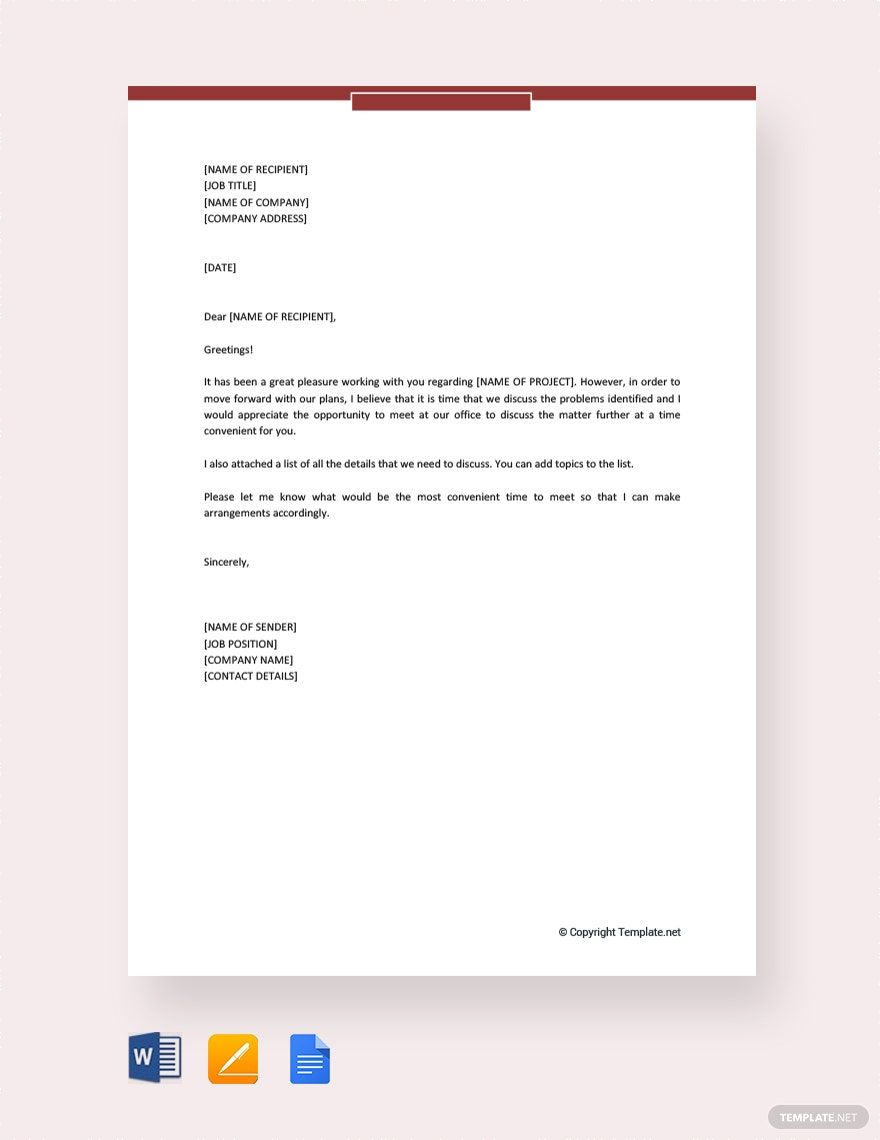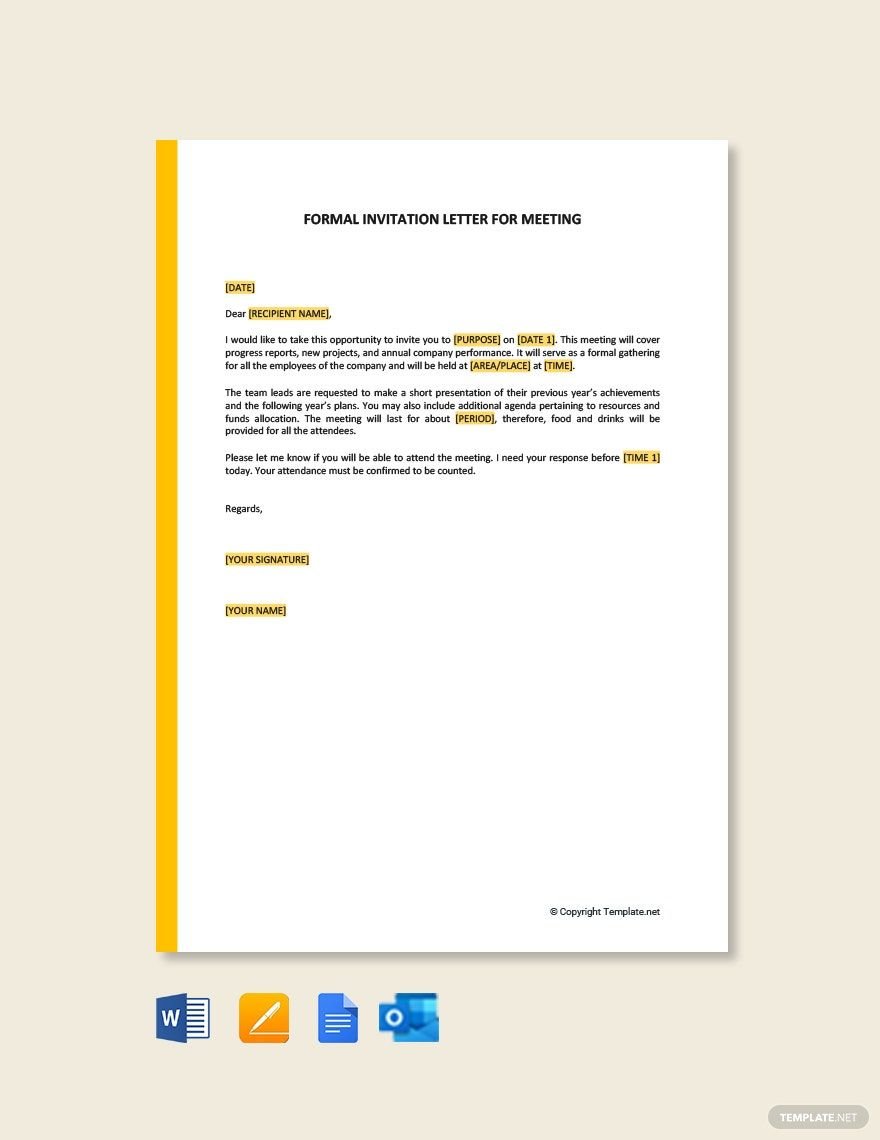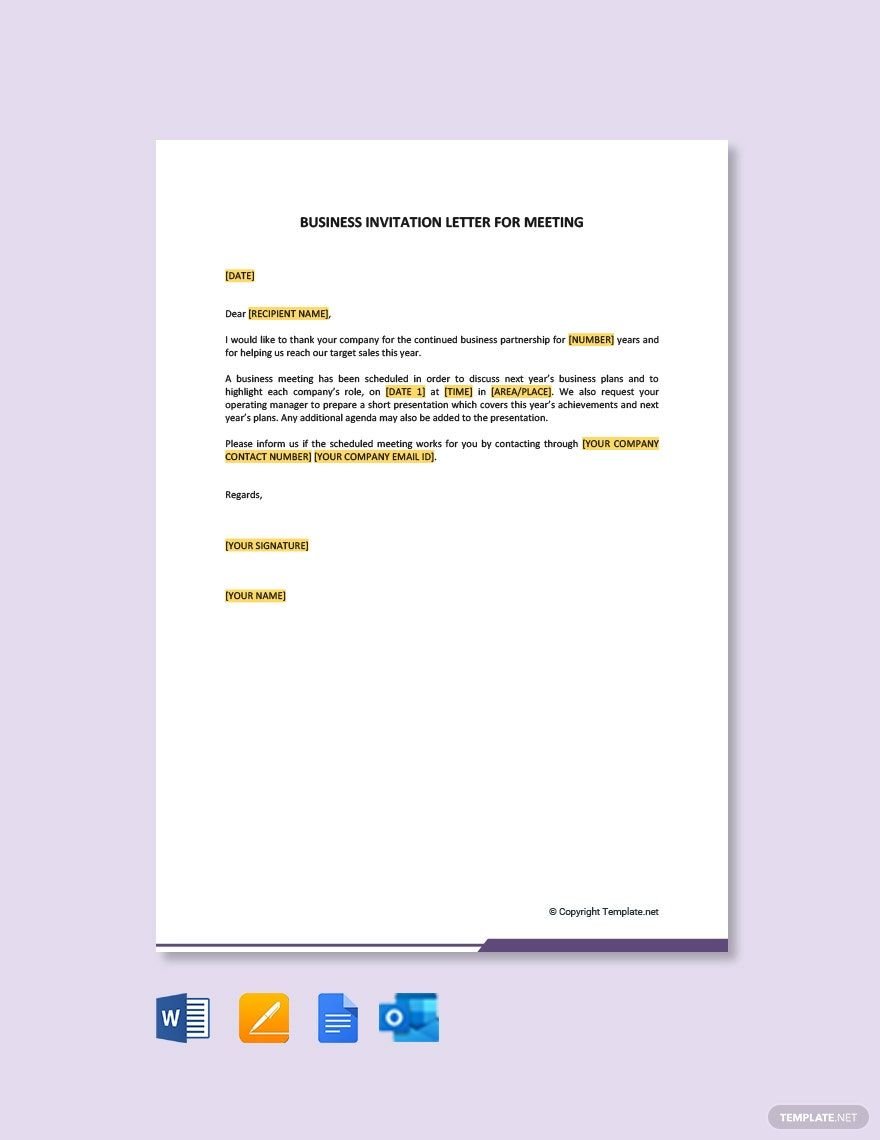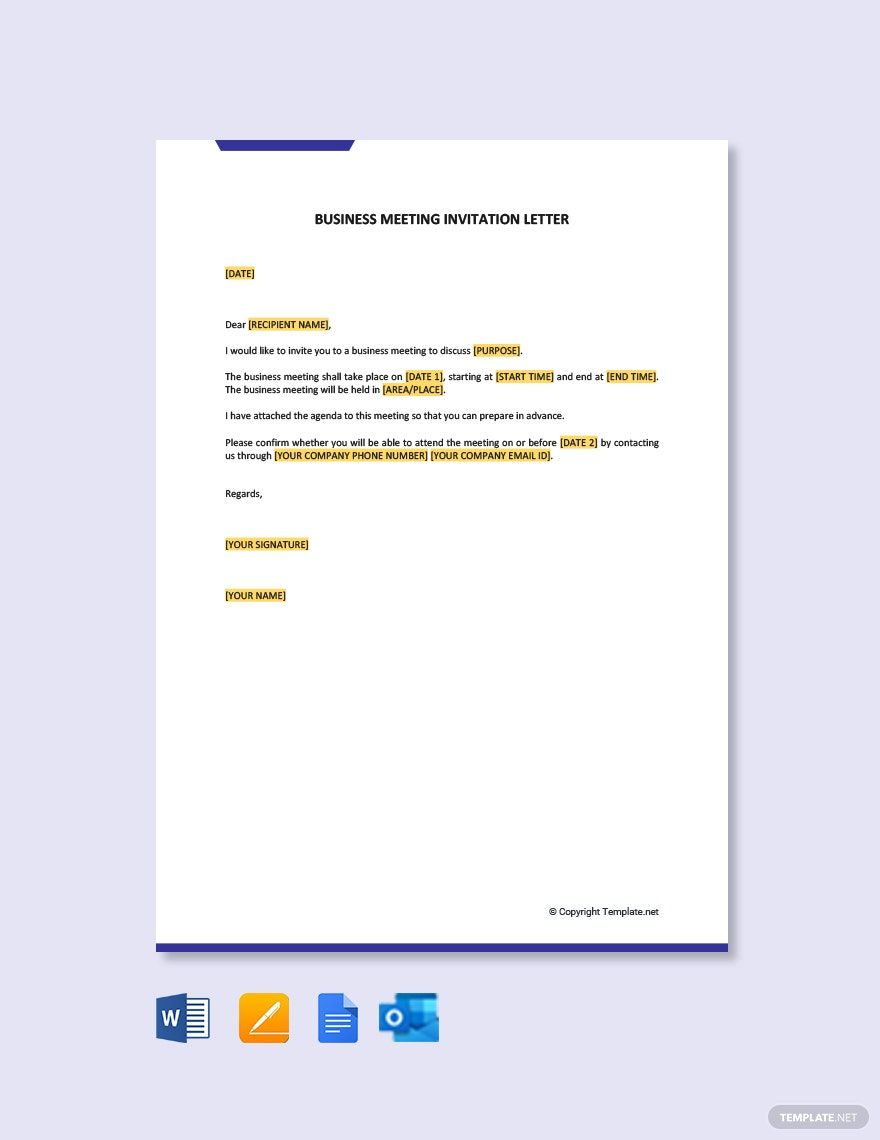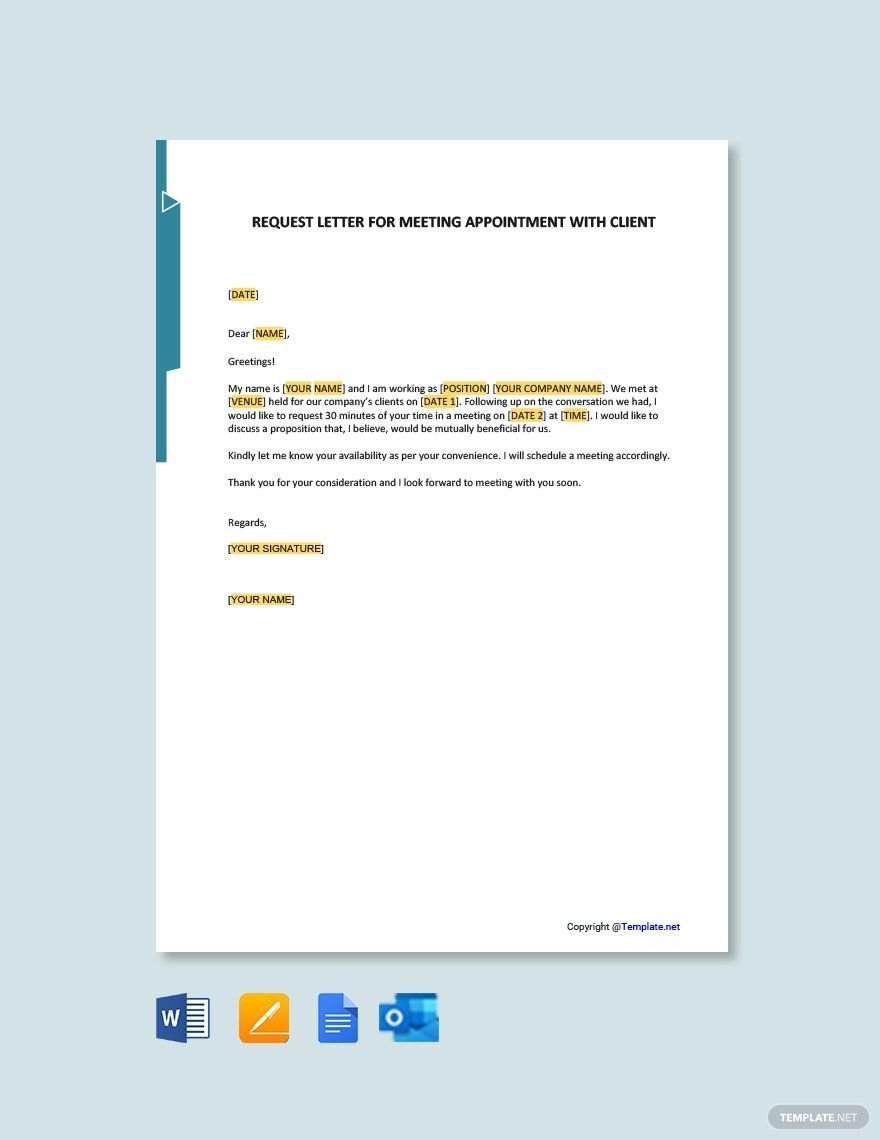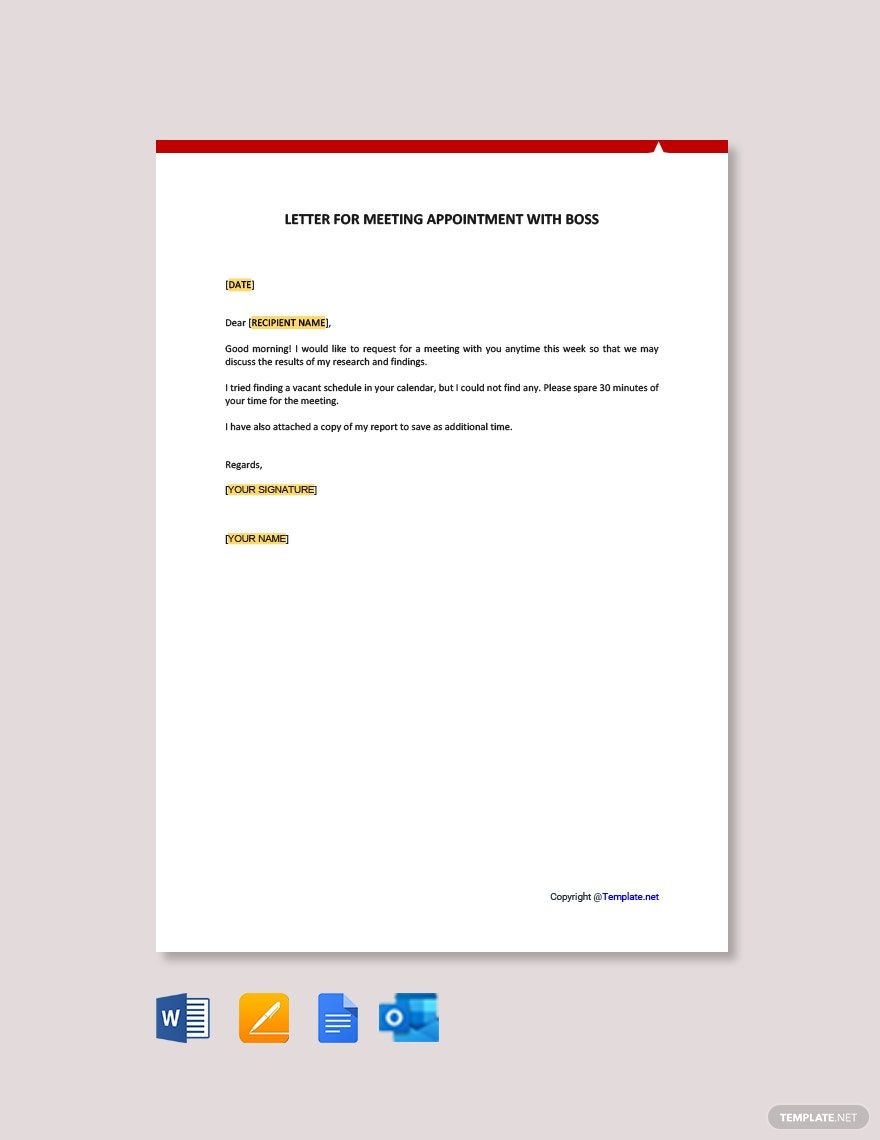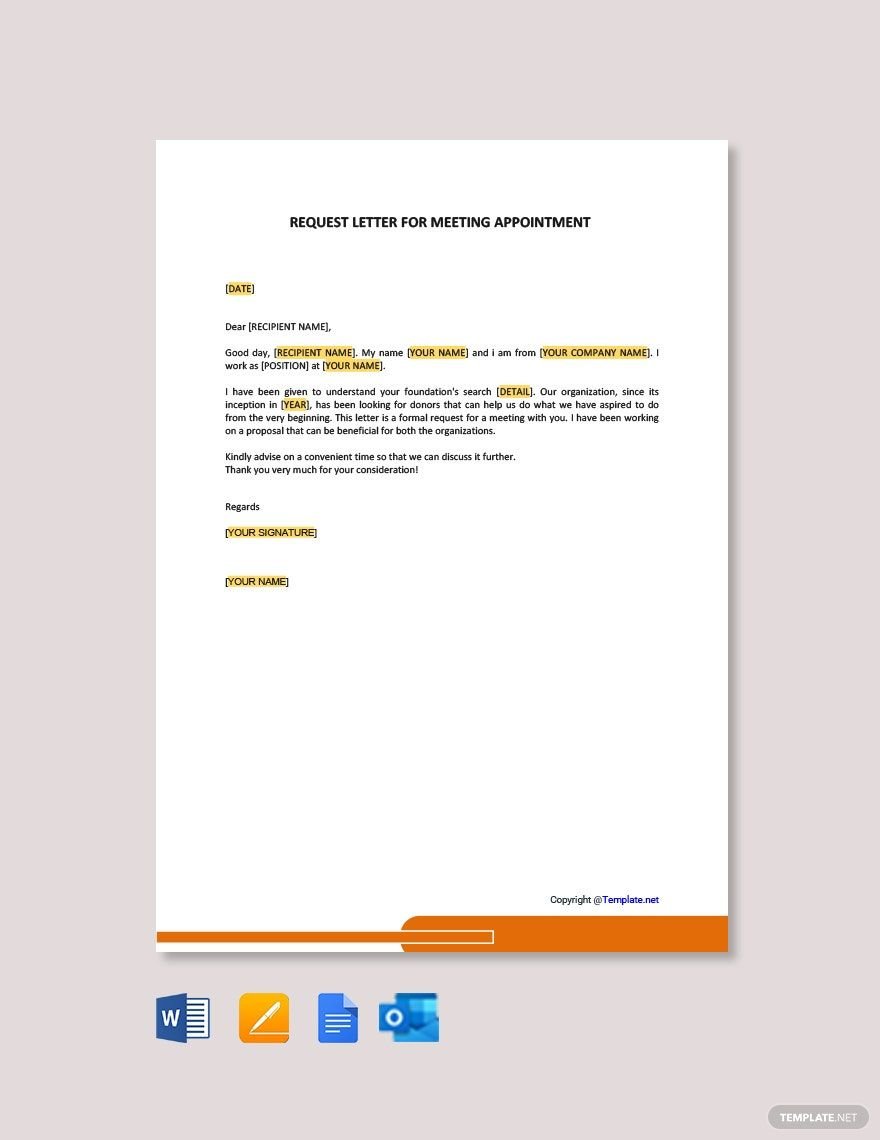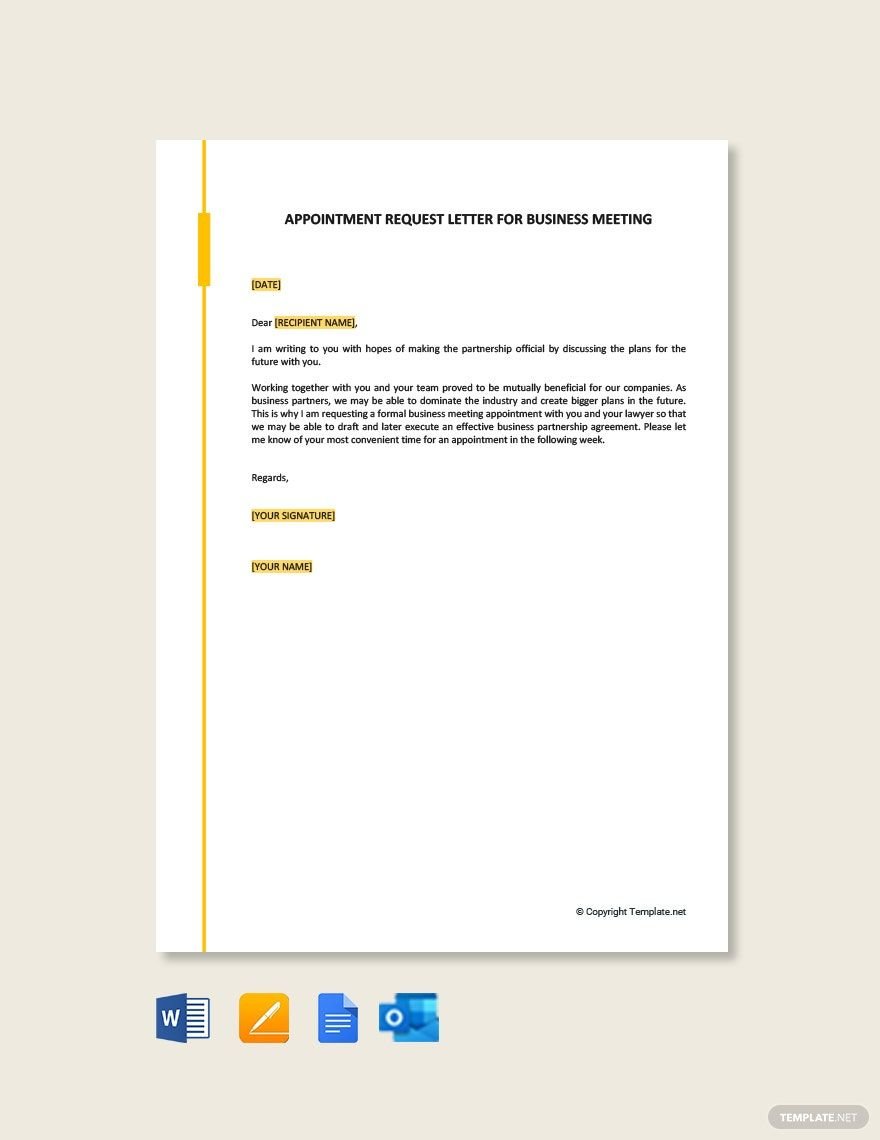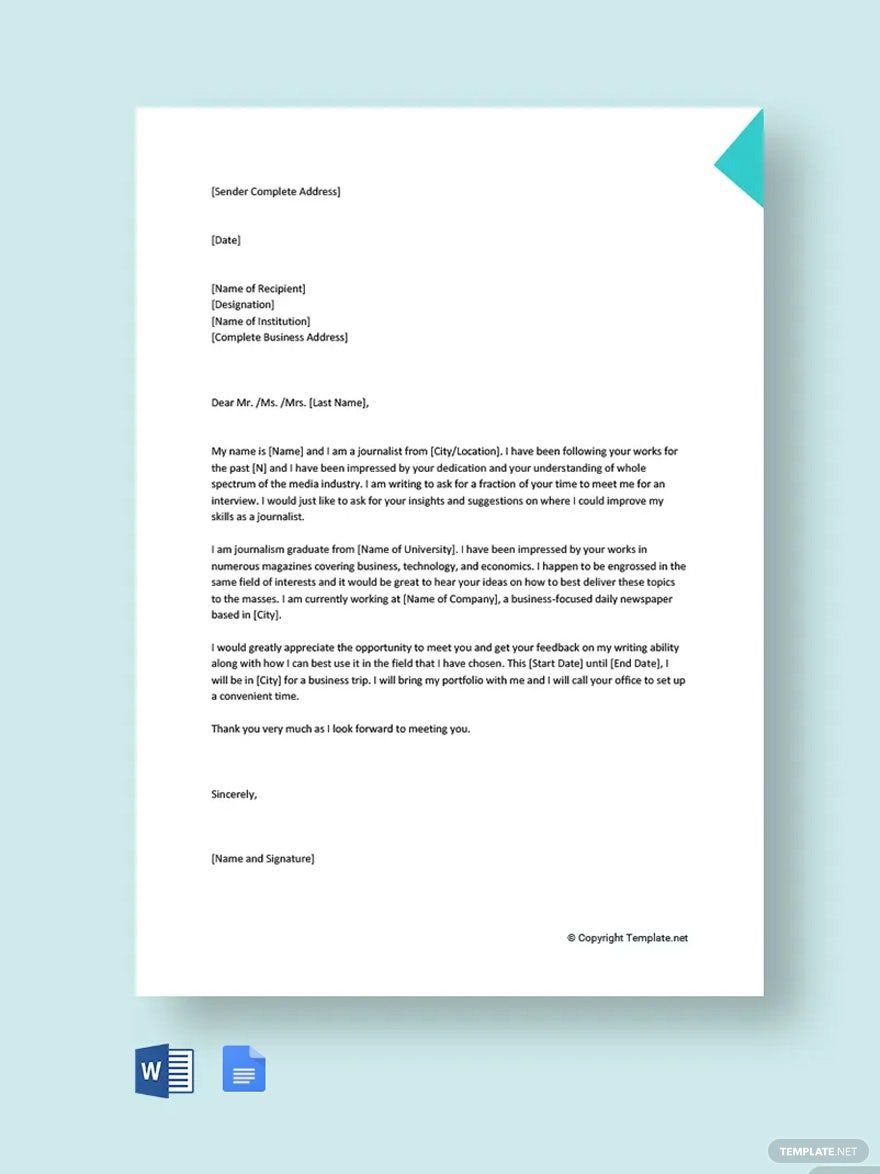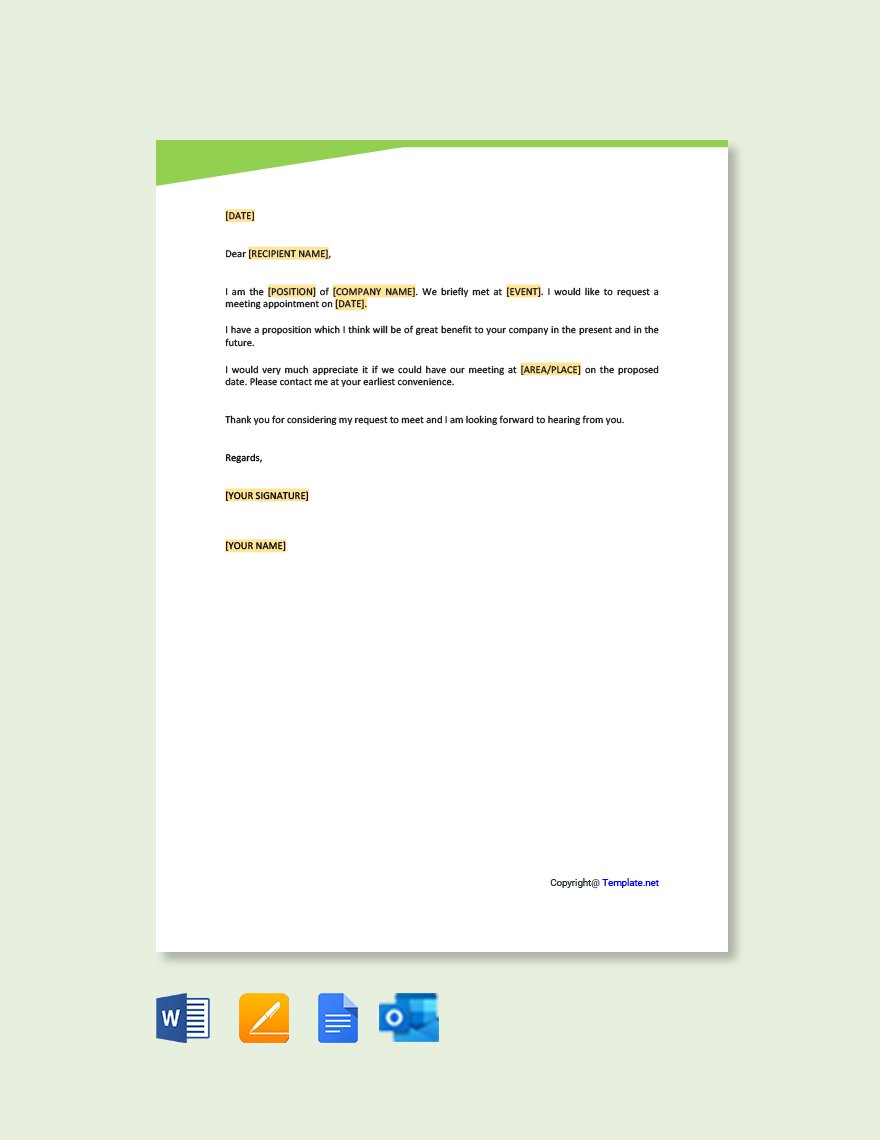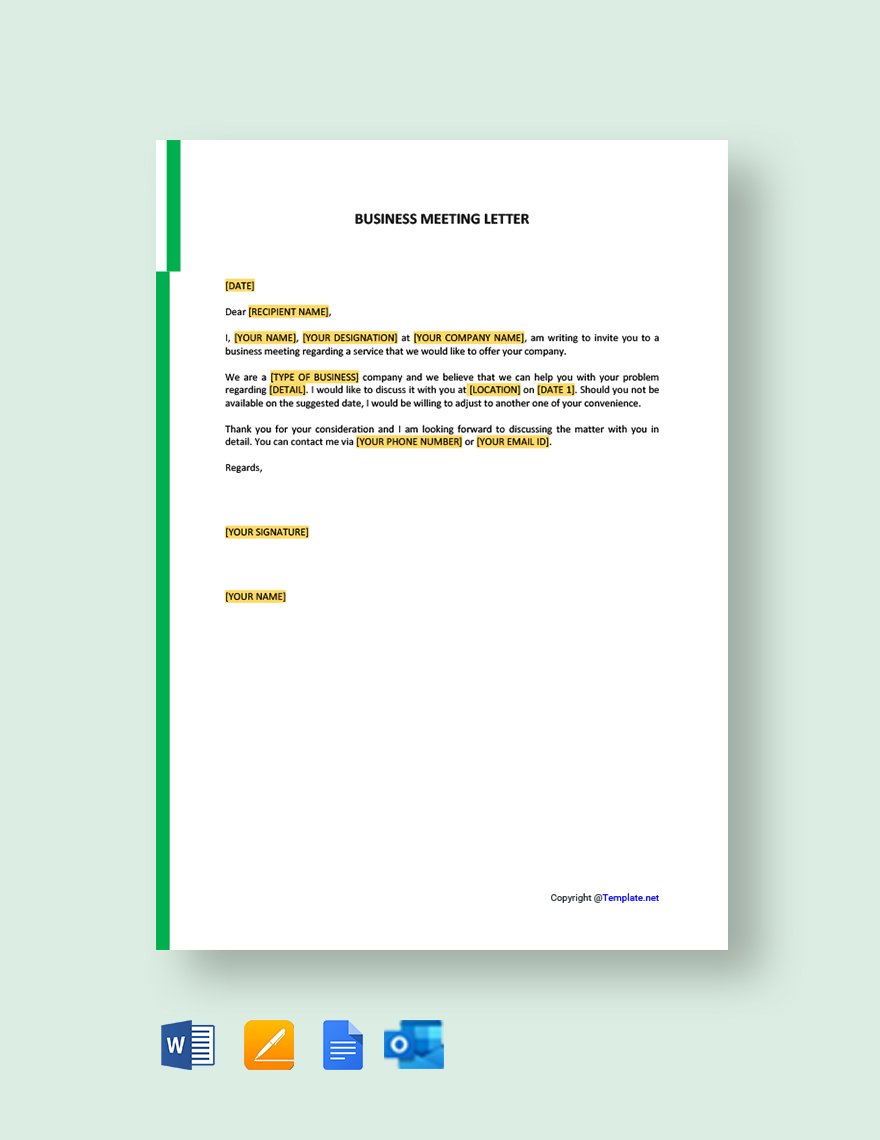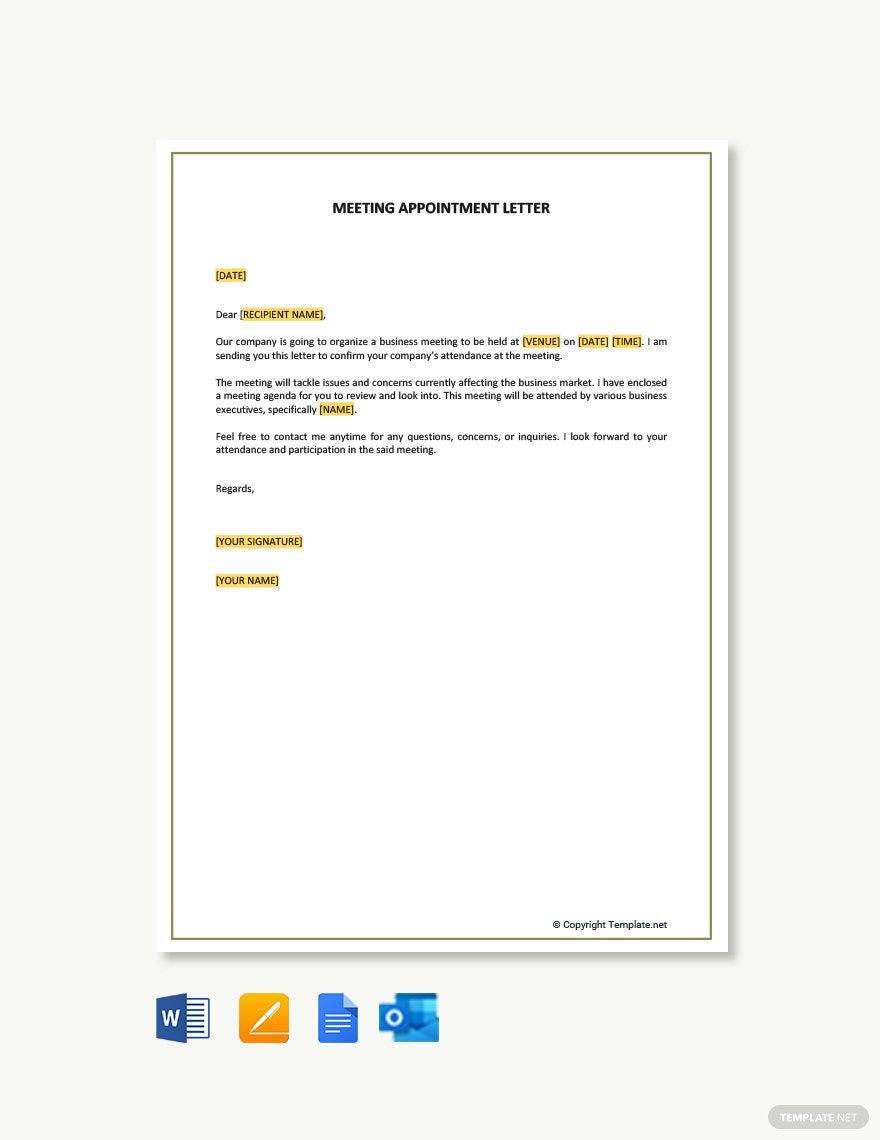Bring Your Communication to Life with Meeting Letter Templates from Template.net
Keep your business correspondence professional, engaging, and impactful with Meeting Letter Templates from Template.net. Designed for professionals looking to streamline their communication, these templates ensure that you capture attention, convey the right message, and save time in the process. Whether you're inviting stakeholders to a crucial meeting or following up with clients after a conference, these templates are your go-to tool. A unique feature is the inclusion of customizable sections where you can place details such as meeting agendas, dates, and contact information, allowing for personalized yet consistent messaging. Plus, no design skills are required—enjoy the ease of professional-grade layouts and start crafting your meeting letters with confidence, whether for print or digital distribution.
Discover the many Meeting Letter Templates we have on hand at Template.net. Choose from various categories, swap in your brand assets, and easily adjust fonts and colors to align with your corporate identity. Add advanced touches like dragging and dropping icons or graphics, or enhancing your template with animated effects and AI-powered text tools for that extra flair. The possibilities are endless, making it fun and stress-free to create personalized meeting letters. Our library is regularly updated with fresh templates suitable for various industries and purposes. When you’re finished, download or share your completed letter via link, print, email, or other export options, ensuring seamless communication across multiple channels.
